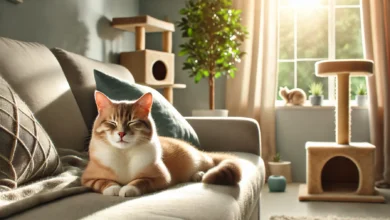Treating Cat Vomiting: Causes and Solutions
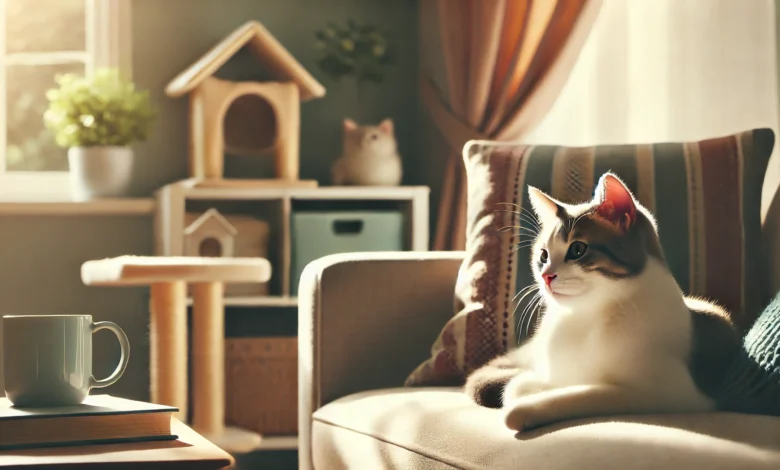
Cats can be very curious and playful creatures, but their health sometimes causes quite a stir among pet owners.
Vomiting is a common problem that nearly every cat owner has encountered.
While occasional vomiting may be normal for cats, frequent or severe vomiting could indicate a more serious issue.
This article explores some of the reasons why cats vomit, various medical causes, and practical steps you can take to address this problem.
Understanding why cats vomit can help you better care for your feline friend by ensuring their health and happiness.
Table of Contents
Understanding Why Cats Vomit
Cats may vomit for a variety of reasons, from minor issues to serious health concerns.
By understanding these causes, you will know when to seek professional help and when minor cases can be managed at home.
Let’s explore the possible reasons why your cat might be vomiting.
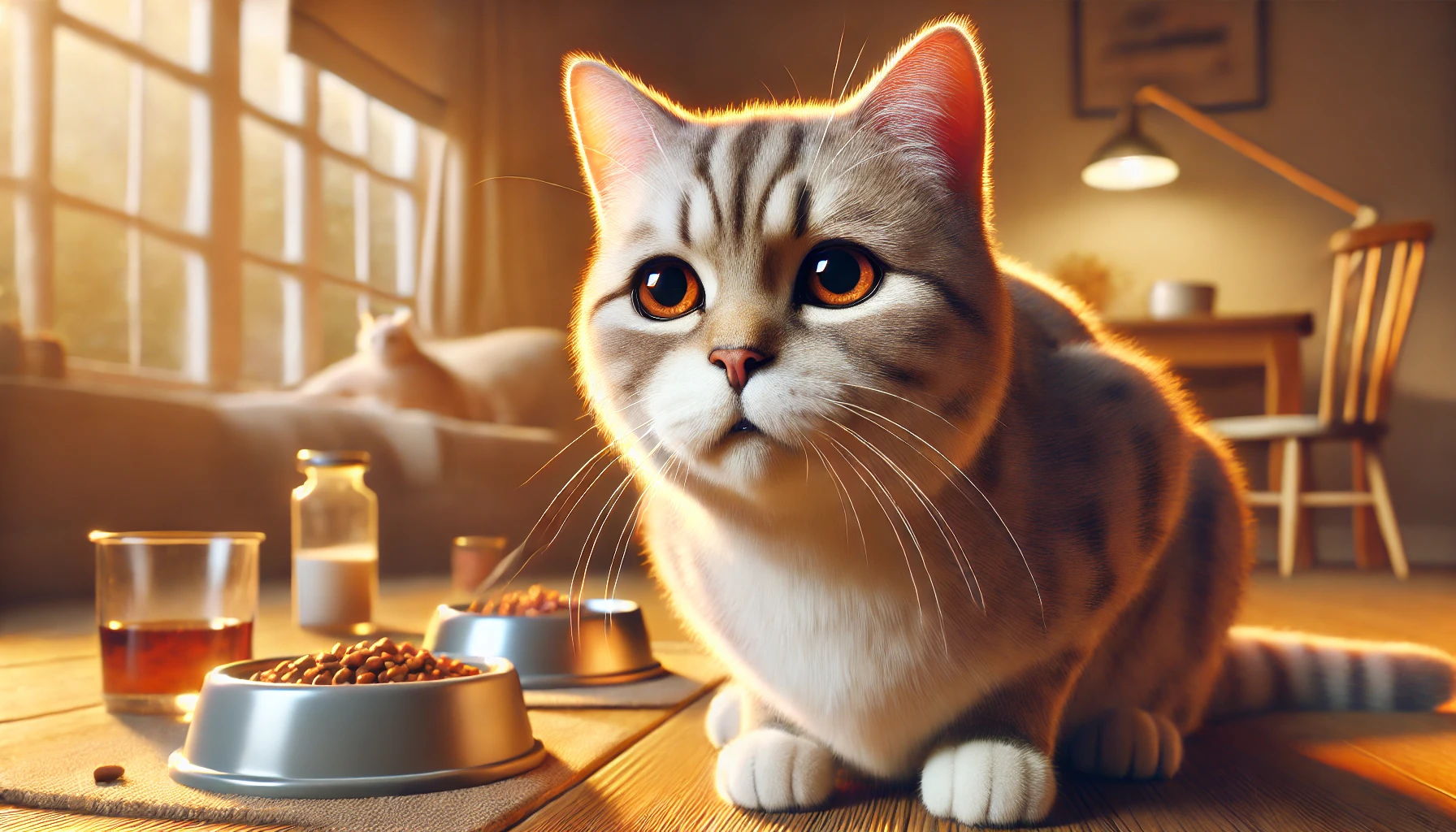
Common Causes of Cat Vomiting
Vomiting in cats can be triggered by several factors.
Here are some of the most frequent causes:
- Eating too quickly: Cats that eat too fast may vomit shortly after. Often, this is because they’ve swallowed air along with their food, which upsets their stomach.
- Dietary changes: Sudden changes in your cat’s diet or introducing new foods can lead to vomiting. Cats have sensitive stomachs, and their digestive systems may need time to adjust to new food.
- Hairballs: Cats groom themselves often, swallowing large amounts of hair, which can accumulate in the stomach until it’s vomited up as a hairball.
- Food allergies: Some cats are sensitive to certain foods or may develop allergies, leading to digestive issues like vomiting. Common allergens include certain proteins or additives in cat food.
- Stress: Environmental changes, such as moving to a new home or introducing a new pet, can cause stress and lead to digestive upset, resulting in vomiting.
Recognizing these common causes can help you determine if your cat’s vomiting is due to behavior, diet, or other factors.
Adjusting feeding habits or gradually changing their diet can often help resolve minor vomiting issues.
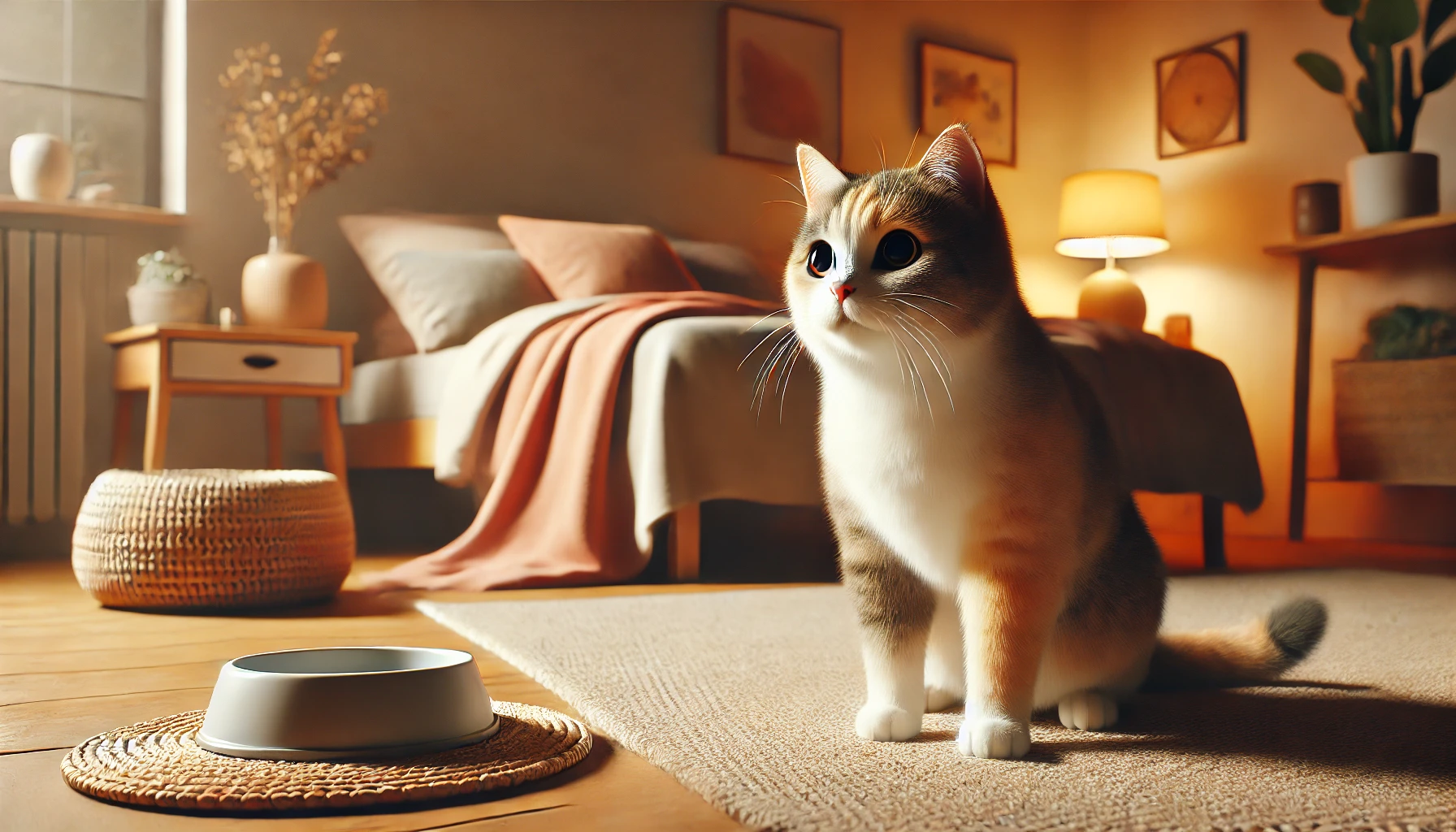
When Vomiting Is Normal vs. Concerning
Not all vomiting is cause for alarm.
Occasional vomiting, especially related to hairballs or eating too quickly, is often normal.
However, some signs may indicate a more serious issue that requires medical attention:
- Frequency: Vomiting more than once or twice a month may indicate an underlying health issue.
- Appearance of the vomit: Vomit that contains blood, bile, or appears foamy could suggest a more serious condition.
- Accompanying symptoms: If vomiting is accompanied by lethargy, loss of appetite, or noticeable weight loss, consult your veterinarian.
By watching for these symptoms, you can better assess if your cat’s vomiting is within the normal range or if it warrants concern.
Monitoring the frequency and other symptoms can help you catch potential health issues early.
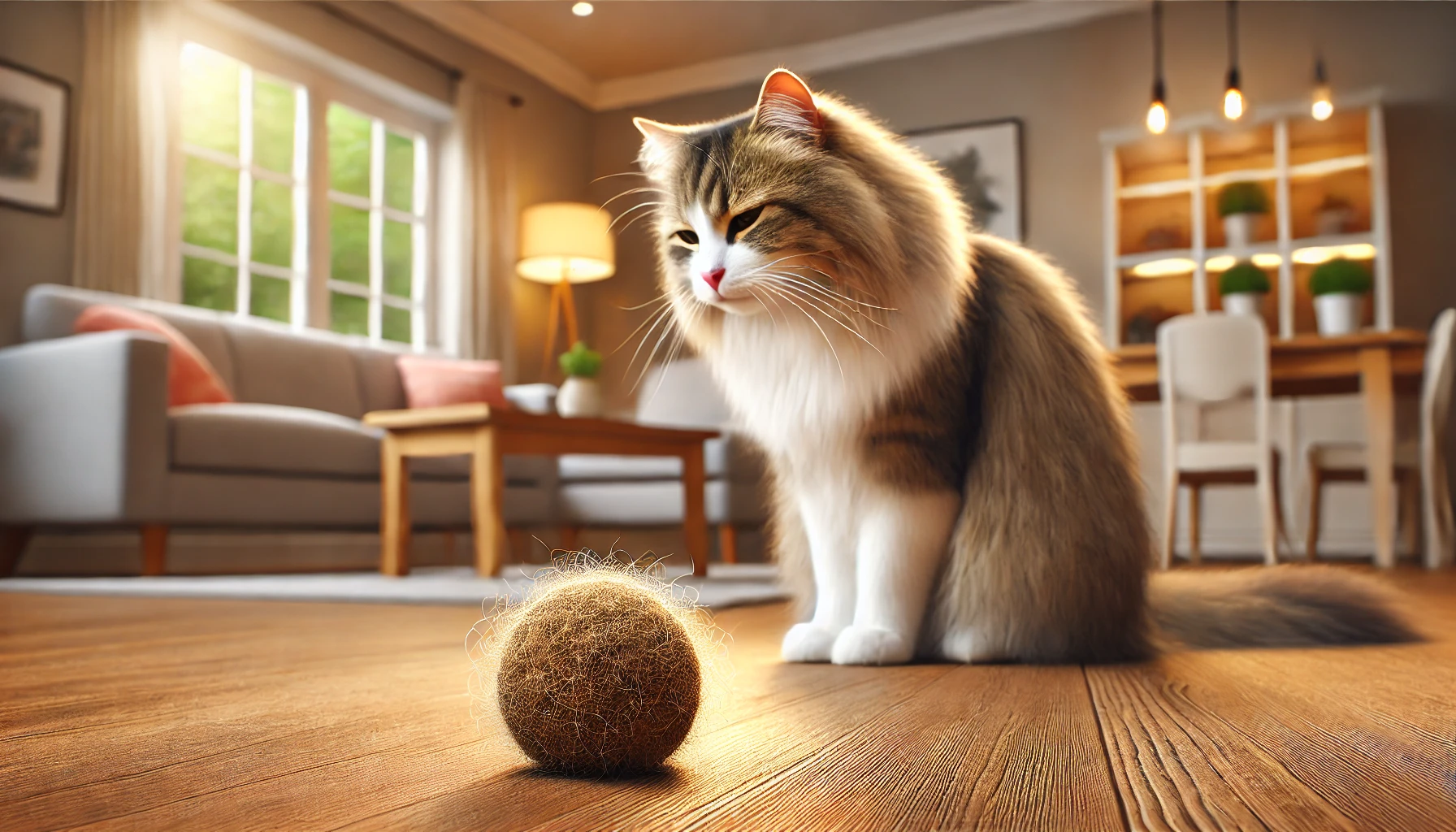
Differentiating Hairballs from Vomiting
Distinguishing hairballs from vomiting can be challenging for many cat owners, but it’s helpful for managing both issues effectively.
Hairballs are usually cylindrical and mainly consist of fur with minimal food content, while vomit often contains partially digested food, bile, or other stomach contents.
If your cat frequently coughs up hairballs, regular grooming and special cat foods designed to reduce hairballs can help.
Reducing hairballs not only makes your cat more comfortable but may also lessen the frequency of vomiting episodes.
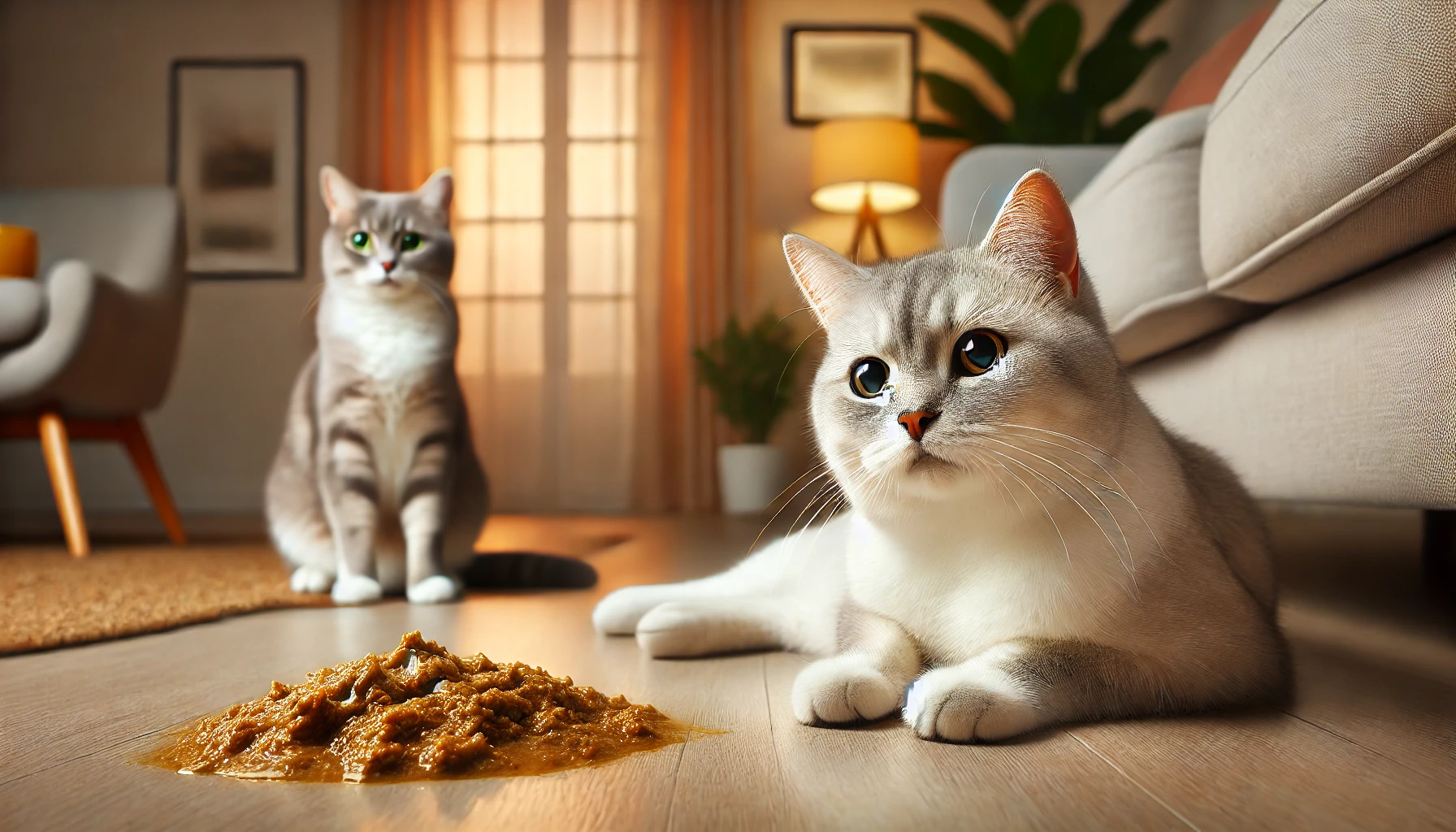
Types of Vomit and What They Mean
The appearance of your cat’s vomit can provide clues about the underlying cause.
Here are some types of vomit and what they may indicate:
- Clear or foamy vomit: This can occur when the stomach is empty, possibly due to acid buildup or digestive issues.
- Yellow or bile-stained vomit: This suggests bile from the liver has entered the stomach, often a sign of an empty stomach or mild digestive upset.
- Undigested or partially digested food: Vomit containing undigested food may indicate that your cat ate too quickly or has a mild stomach issue.
- Vomit containing blood: Blood in vomit could indicate a more severe issue, such as gastrointestinal injury or ulceration, and requires immediate veterinary attention.
By observing the type of vomit, you can gain valuable insight into what may be causing your cat’s symptoms.
This information can be essential when discussing the issue with your veterinarian.
Vomiting in cats can range from minor issues to serious health concerns. Knowing these causes can help determine if veterinary care is needed or if the problem can be managed at home.
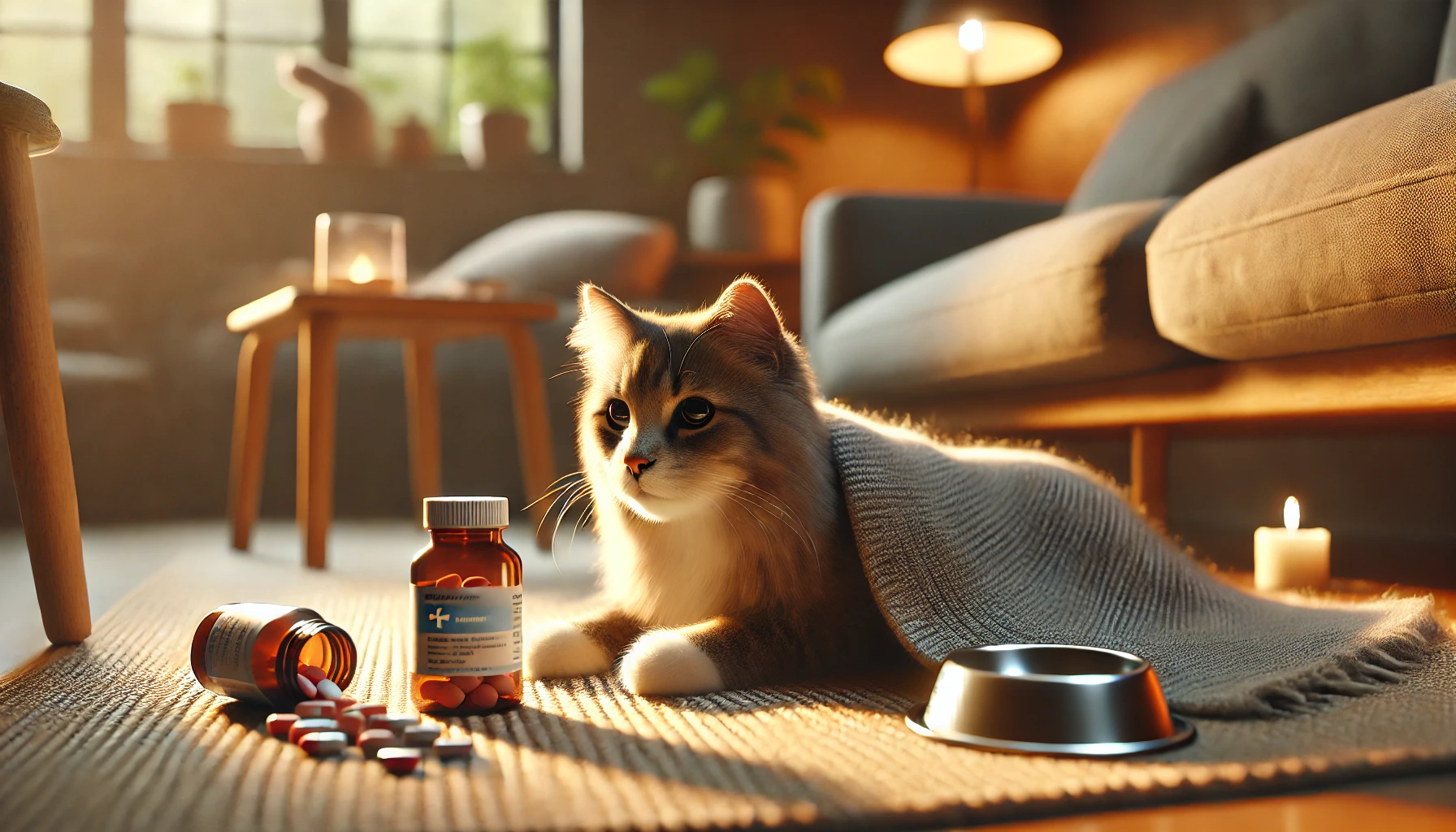
Medical Causes of Vomiting in Cats
When vomiting becomes frequent or severe, there is often an underlying medical condition.
Several diseases and disorders can lead to vomiting in cats, requiring professional intervention for diagnosis and treatment.
Understanding these medical causes can help you identify when it’s time to seek veterinary care.
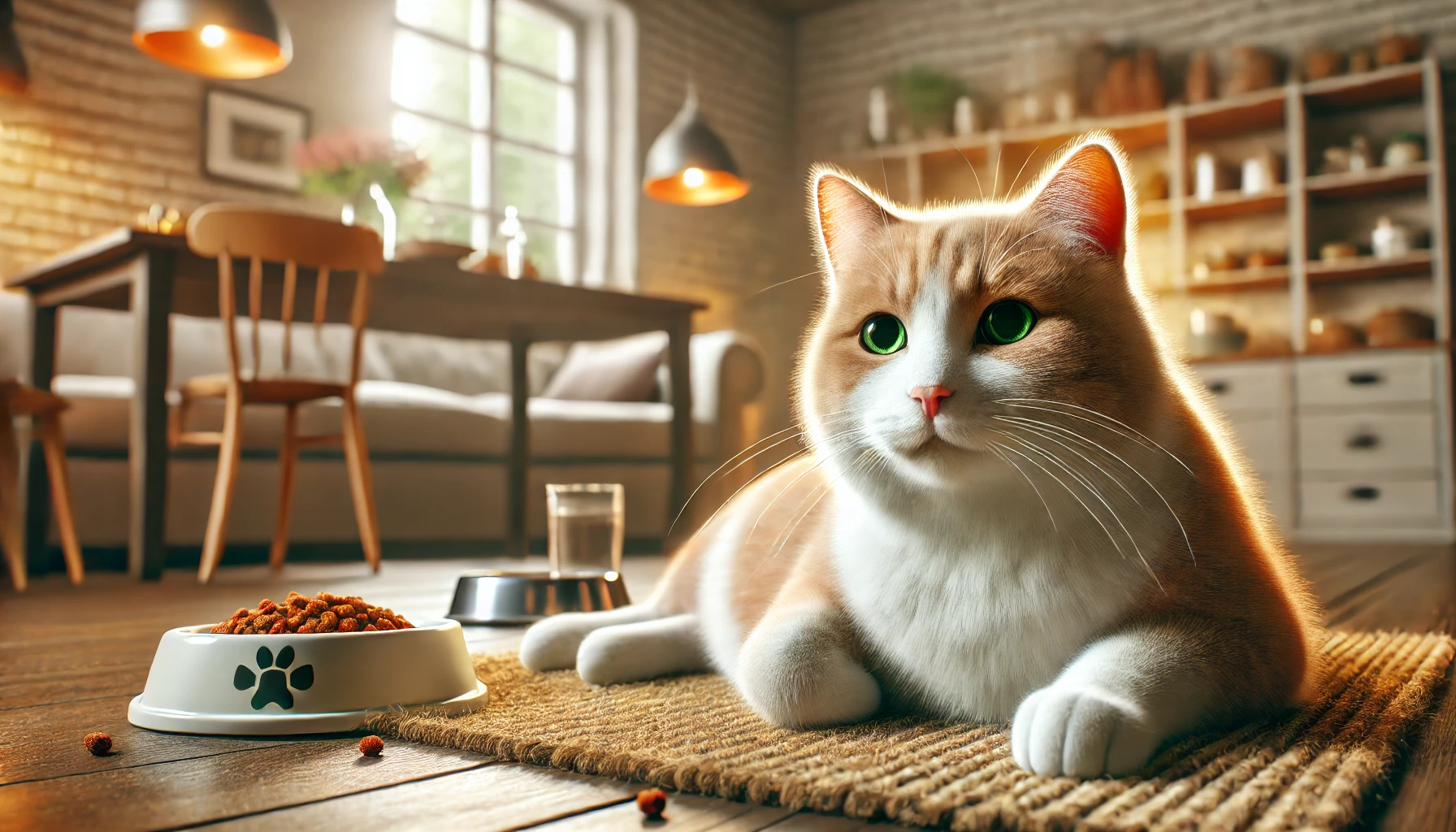
Gastrointestinal Disorders
Gastrointestinal (GI) issues are among the most common causes of vomiting in cats.
Conditions such as inflammatory bowel disease (IBD), pancreatitis, and gastroenteritis can disrupt the digestive system, eventually leading to chronic vomiting.
For instance, IBD causes inflammation in the GI tract, resulting in frequent vomiting and loose stools.
Pancreatitis is another condition that can severely impact a cat’s digestion and overall health.
- Symptoms: Persistent vomiting, diarrhea, weight loss, and abdominal pain.
- Treatment: Managing GI disorders typically involves dietary adjustments, medication, and sometimes long-term treatment plans, especially for chronic conditions like IBD.
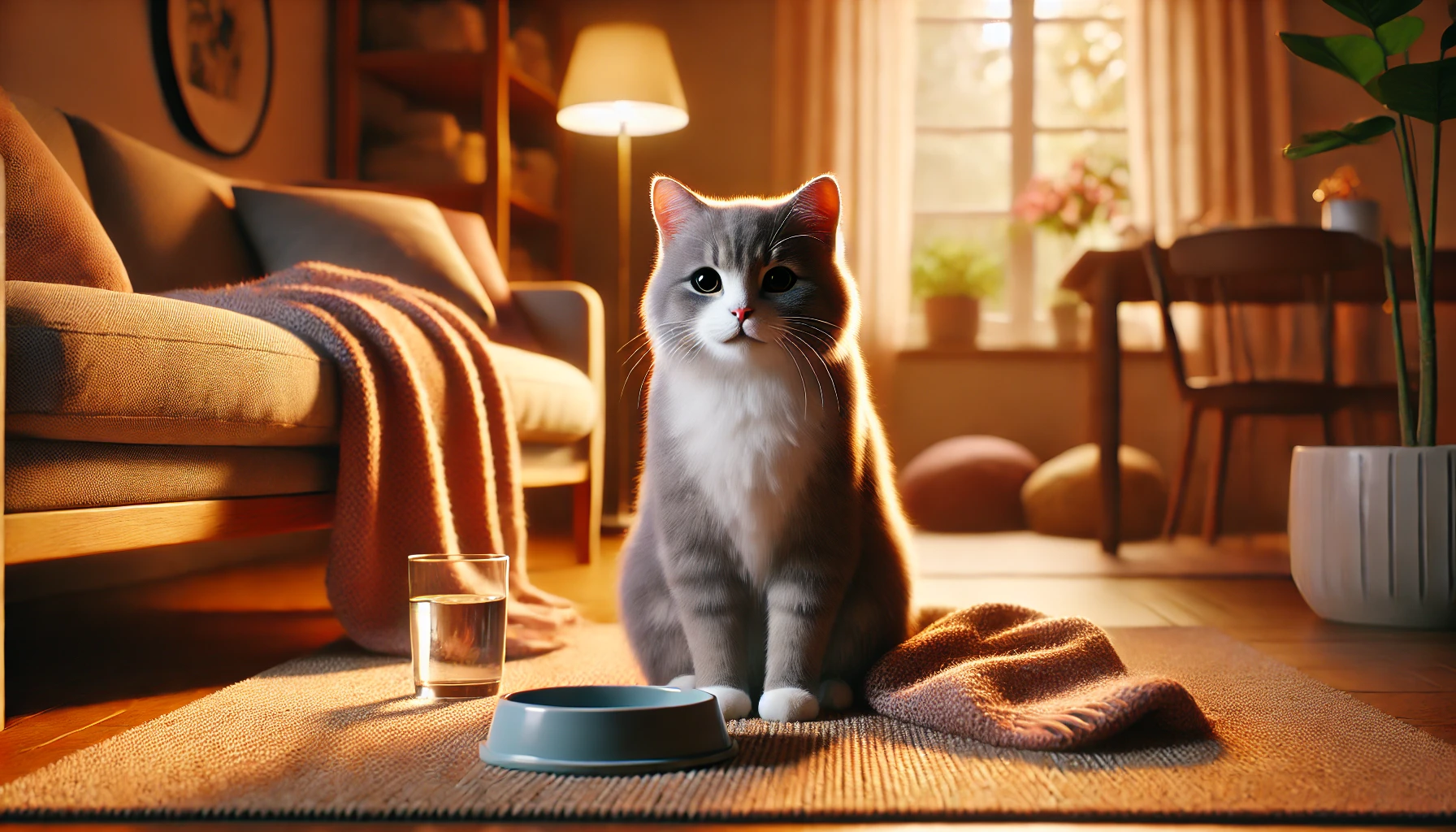
Kidney and Liver Problems
The kidneys and liver are essential organs for filtering toxins, and their health is vital for a cat’s overall well-being.
When these organs are damaged, toxins can accumulate in a cat’s body, often leading to vomiting.
Chronic kidney disease (CKD), common in aging cats, can cause nausea and vomiting as the kidneys lose their ability to filter effectively.
Similarly, liver disease can contribute to vomiting as the liver struggles to process waste products properly.
- Symptoms: Vomiting, increased thirst, reduced appetite, weight loss, and lethargy.
- Treatment: Early diagnosis is critical. Treatments for kidney or liver disease usually involve specialized diets, medications, and ongoing veterinary care to manage symptoms and support organ function.
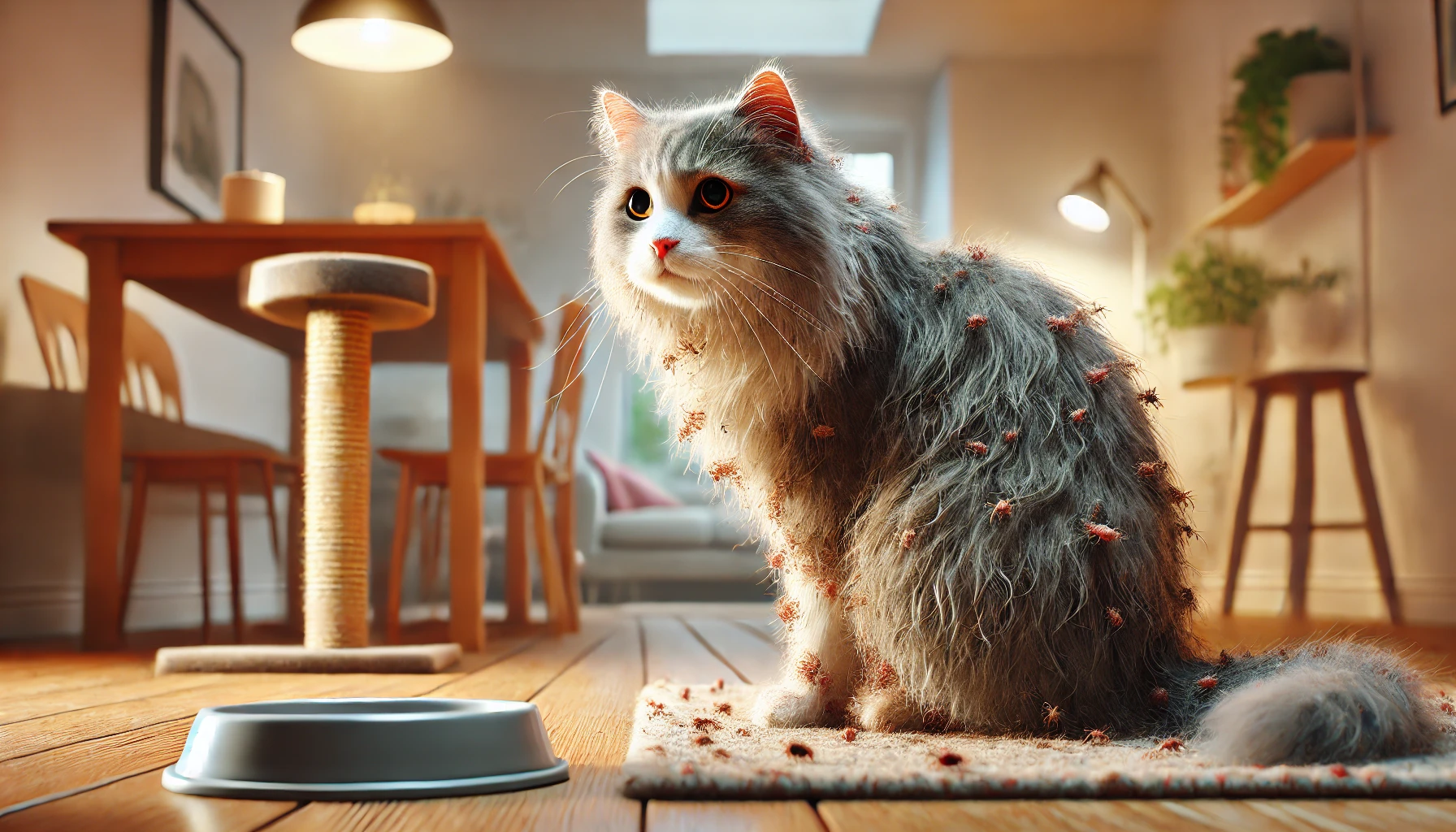
Infections and Parasites
Infections and parasites can significantly affect a cat’s digestive system, causing vomiting along with other symptoms.
Bacterial infections, viral infections like feline distemper, and parasites such as roundworms and tapeworms can disrupt digestion.
These infections often affect outdoor cats or those exposed to infected animals.
- Symptoms: Vomiting, diarrhea, dehydration, fever, and lethargy.
- Treatment: Treatment depends on the specific infection or parasite involved. Common approaches include anti-parasitic drugs, antibiotics, and supportive care to help clear the infection and restore health.

Food Allergies and Sensitivities
Just like humans, cats can develop food allergies or intolerances that lead to vomiting.
Common allergens include specific proteins (like chicken or fish) or certain ingredients and additives in commercial cat foods.
Allergies may develop over time, even if your cat previously tolerated the food well.
- Symptoms: Vomiting, itching, skin irritation, and sometimes diarrhea.
- Treatment: Food allergies are managed by eliminating the allergen from your cat’s diet. Your veterinarian may recommend an elimination diet to identify the specific ingredient causing the reaction.
Knowing these medical conditions can help you act quickly if vomiting becomes persistent or if other signs appear.
If vomiting persists or is accompanied by concerning symptoms, consult your veterinarian for a proper evaluation and treatment plan.
When vomiting is frequent or severe, an underlying medical issue may be present. Possible causes include gastrointestinal disorders, kidney or liver problems, infections, and allergies. Veterinary diagnosis and treatment are often required.

Home Remedies and Immediate Actions Against Cat Vomiting
When your cat vomits occasionally, there are some home remedies and immediate actions you can take to help relieve their discomfort.
These techniques can address minor issues and prevent vomiting from recurring.
However, if the vomiting persists or other alarming signs appear, it is best to consult your veterinarian.

Changes in Your Cat’s Diet
Diet plays an important role in your cat’s digestive health.
Making thoughtful adjustments can help reduce vomiting, including:
- Introduce new food gradually: Cats can be sensitive to sudden dietary changes. When introducing new food, mix it with their current diet over several days to allow a smooth transition.
- High-quality, hypoallergenic food: If food allergies are suspected, switching to a hypoallergenic diet may help. These foods are formulated to be minimally reactive and gentle on the stomach.
- Feed smaller, frequent meals: Large meals can strain your cat’s digestive system. Offering small quantities multiple times a day may aid digestion and reduce vomiting.
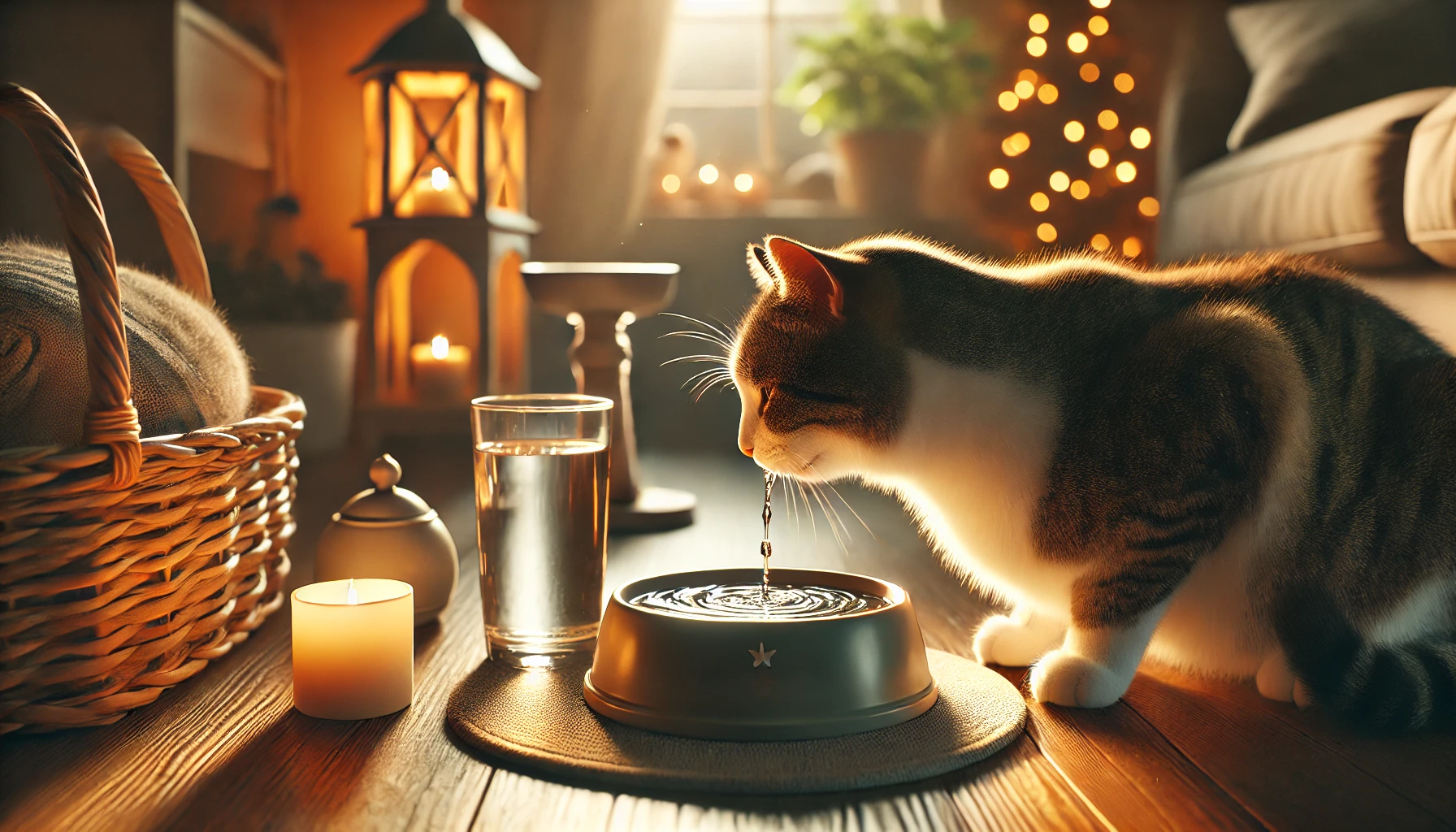
Hydration: Keeping Cats Well-Hydrated
Proper hydration is essential, especially if your cat has been vomiting:
- Fresh water at all times: Ensure your cat always has access to clean, fresh water to prevent dehydration.
- Offer ice cubes: If your cat is reluctant to drink, ice cubes can encourage fluid intake and soothe an upset stomach.
- Consider unflavored electrolyte solutions: Products like unflavored Pedialyte can help replenish lost electrolytes. Consult your veterinarian for the correct dosage.
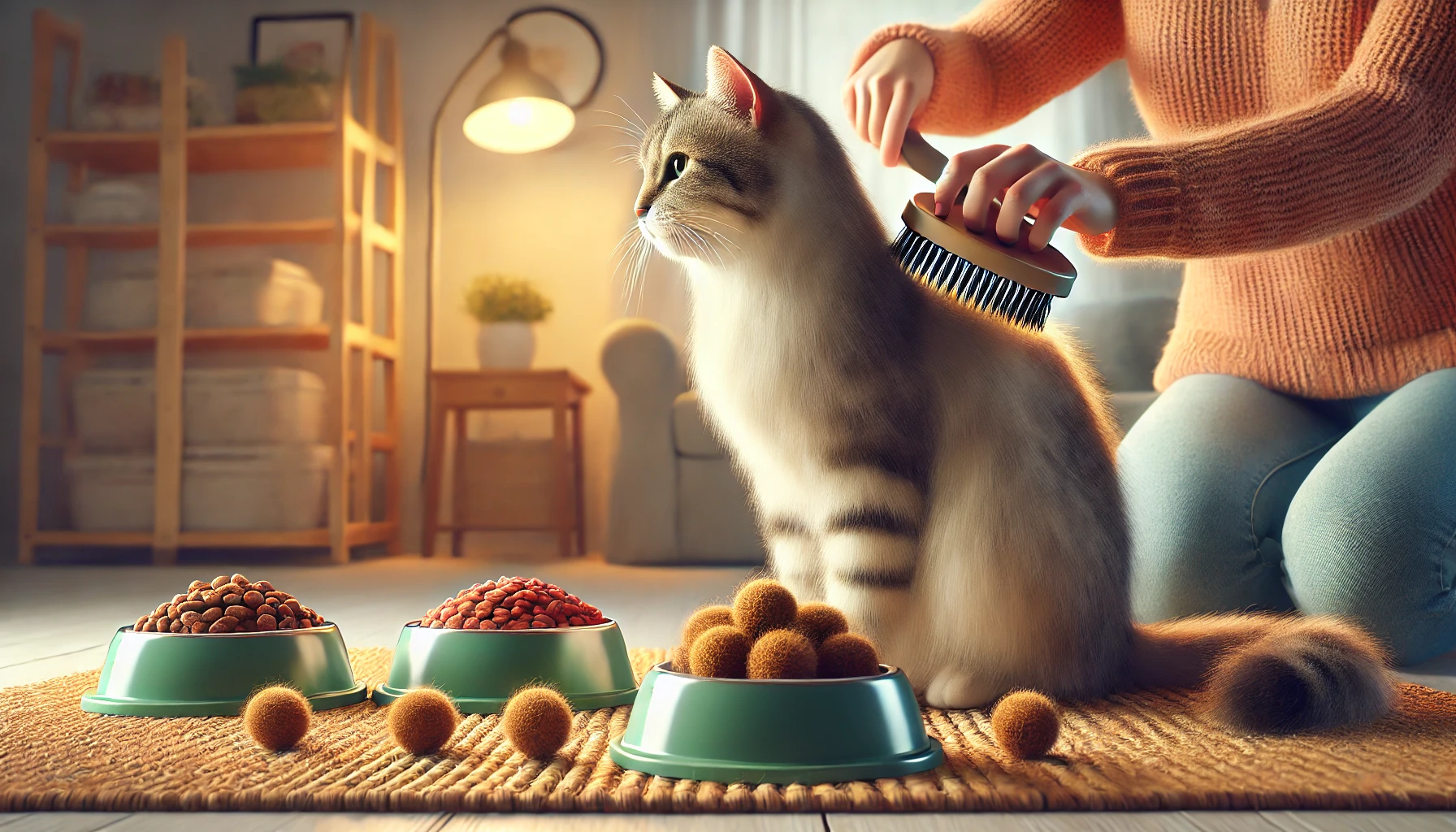
Diet Change and Grooming to Control Hairballs
Hairballs are one of the main causes of vomiting in cats.
Managing hairballs involves:
- Regular grooming: Brushing your cat frequently reduces the amount of hair they ingest during self-grooming, which in turn reduces hairball formation.
- Specialized diets: Some cat foods are designed to decrease hairballs by promoting healthy digestion and allowing ingested hair to pass more smoothly.
- Hairball medications: Over-the-counter products, such as hairball gels or pastes, help lubricate the digestive tract, making it easier for hair to pass through.

When to Withhold Food Briefly
Temporarily withholding food can give your cat’s digestive system a break in certain situations:
- Temporary fasting: For adult cats, a short fasting period of 12-24 hours allows the stomach to rest. Always provide fresh water during this time.
- Resume gradually: After fasting, start with a bland diet, such as boiled chicken or rice, offered in small portions, and gradually transition back to their regular food over several days.
Keep in mind that while these home remedies can help with minor issues, persistent vomiting or other concerning symptoms warrant a visit to the veterinarian to rule out more serious health concerns.
For occasional vomiting, you can try home remedies like gradual diet changes, hydration, and controlling hairballs. If vomiting persists, consult a veterinarian.
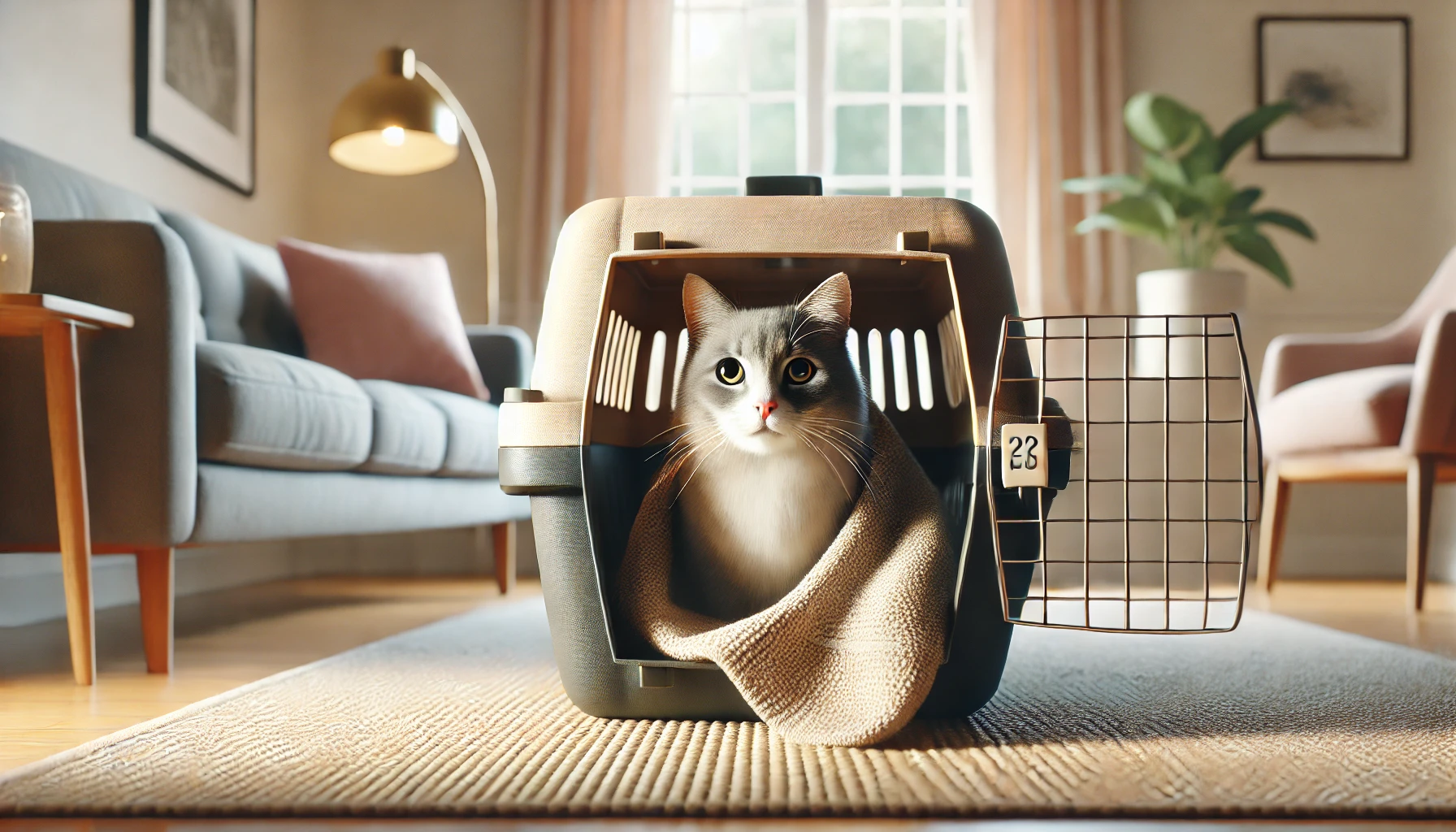
When to Take Your Cat to a Veterinarian for Vomiting
While occasional vomiting in cats may be nothing to worry about, there are times when it could indicate a serious issue that requires a veterinarian’s attention.
Knowing when to seek professional help can make a difference in providing timely intervention and keeping your cat healthy.
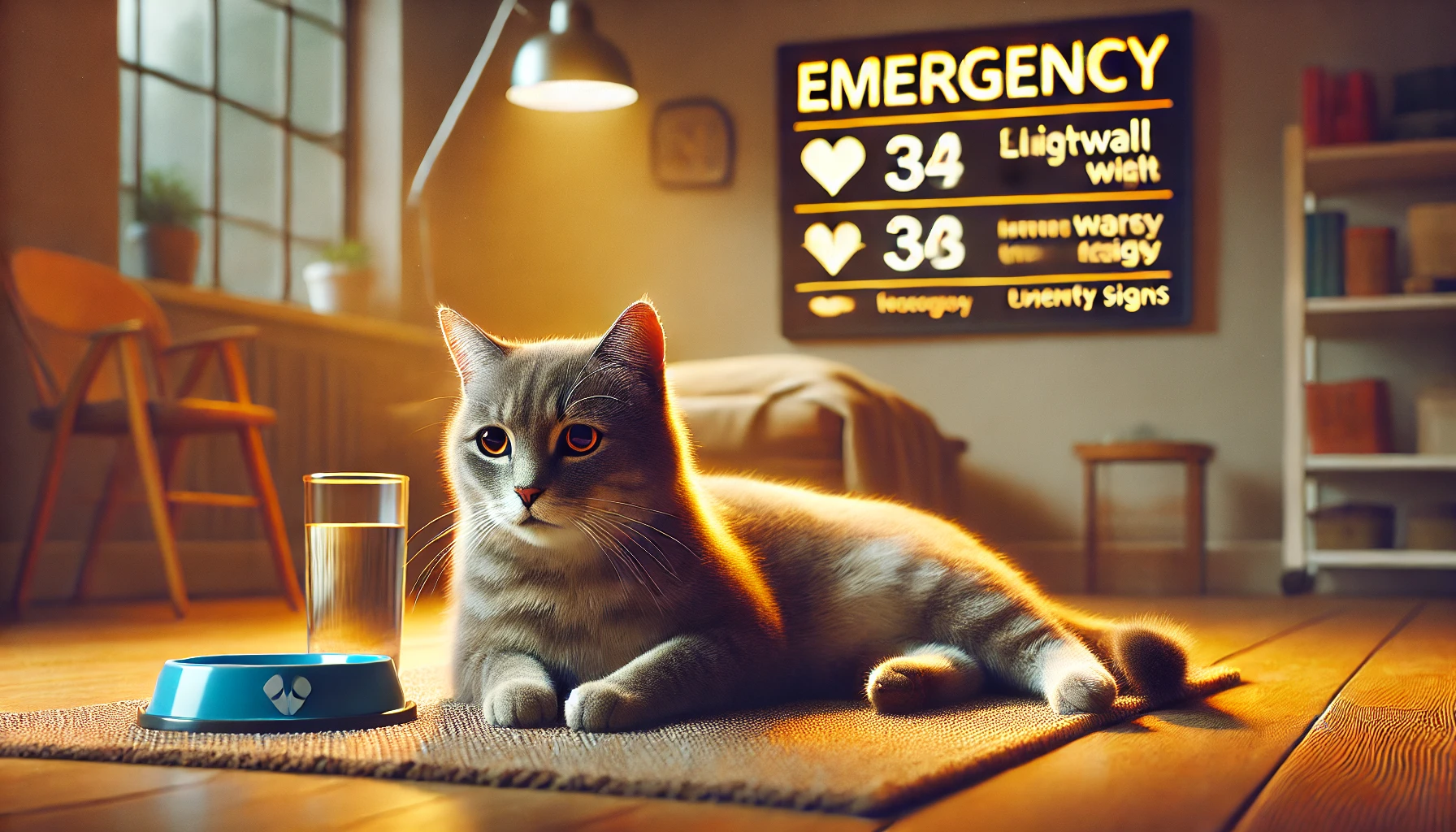
Signs It’s an Emergency
Some signs and symptoms related to vomiting may signal an emergency.
If you notice any of the following signs, it’s best to seek immediate veterinary care:
- Severe vomiting: Vomiting several times a day or continuing for more than 24 hours can indicate a more serious problem.
- Blood in vomit: Blood in vomit, whether fresh or digested (dull red or dark, coffee ground-like), may suggest internal bleeding or injury.
- Severe lethargy or weakness: If your cat appears extremely tired or unable to move, it may be experiencing a serious health issue.
- Labored breathing: Any sign of labored breathing in combination with vomiting is a warning sign and requires immediate attention.
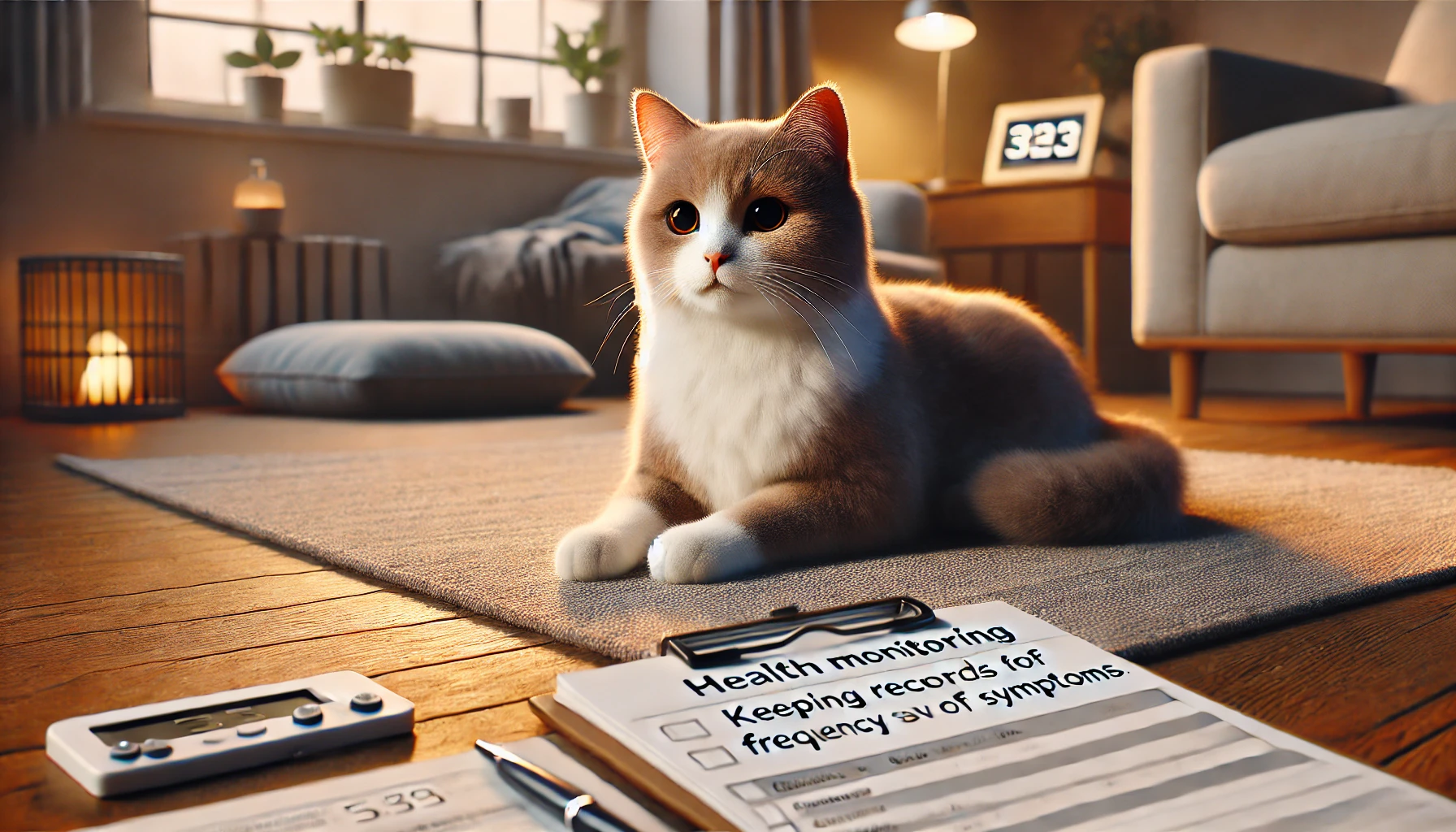
How to Monitor Frequency and Severity
Monitoring the frequency and severity of your cat’s vomiting can help you decide when it’s time to visit the veterinarian.
Here are some tips:
- Record each incident: Keep track of the date, time, nature of the contents, and any other symptoms. This information can be helpful for your veterinarian in making an accurate assessment.
- Observe other symptoms: Note any changes in your cat’s behavior, appetite, or litter box habits. If other unusual symptoms accompany vomiting, it may indicate a health concern.
- Consider recent changes: Evaluate any recent changes in diet, environment, or stress levels that may be contributing factors to your cat’s vomiting.
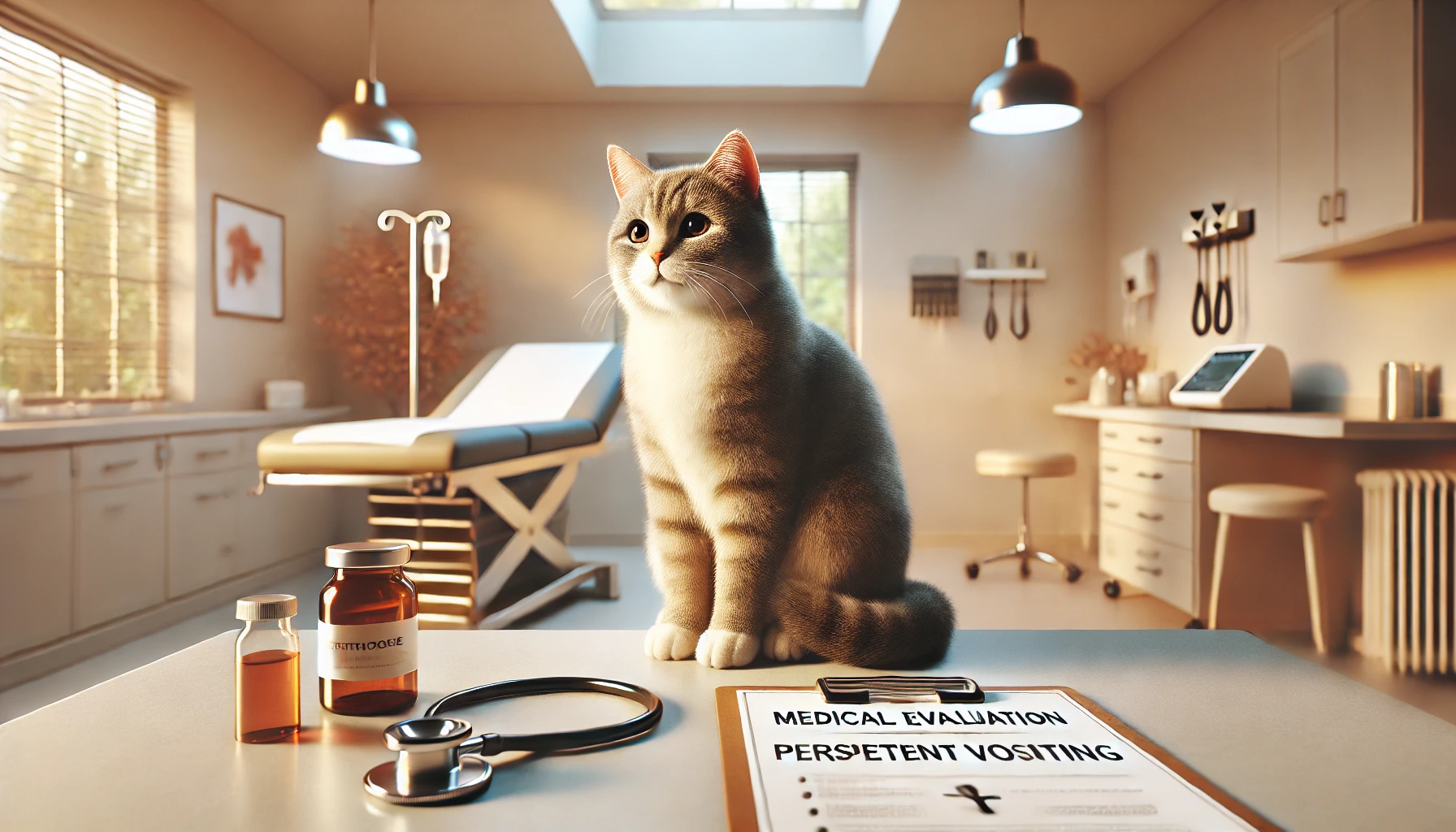
Diagnostic Tests for Persistent Vomiting
Persistent vomiting may require veterinary tests to identify the underlying cause.
Common tests include:
- Blood tests: Blood work can reveal signs of infection, organ dysfunction, or other health issues causing vomiting.
- Imaging: X-rays and ultrasounds can help detect blockages, tumors, or structural issues in your cat’s digestive system.
- Fecal examination: A fecal sample is often recommended to check for parasites or infections, particularly in outdoor cats.
- Endoscopy: In complex cases, an endoscopy may be needed to visually examine the stomach and intestines.
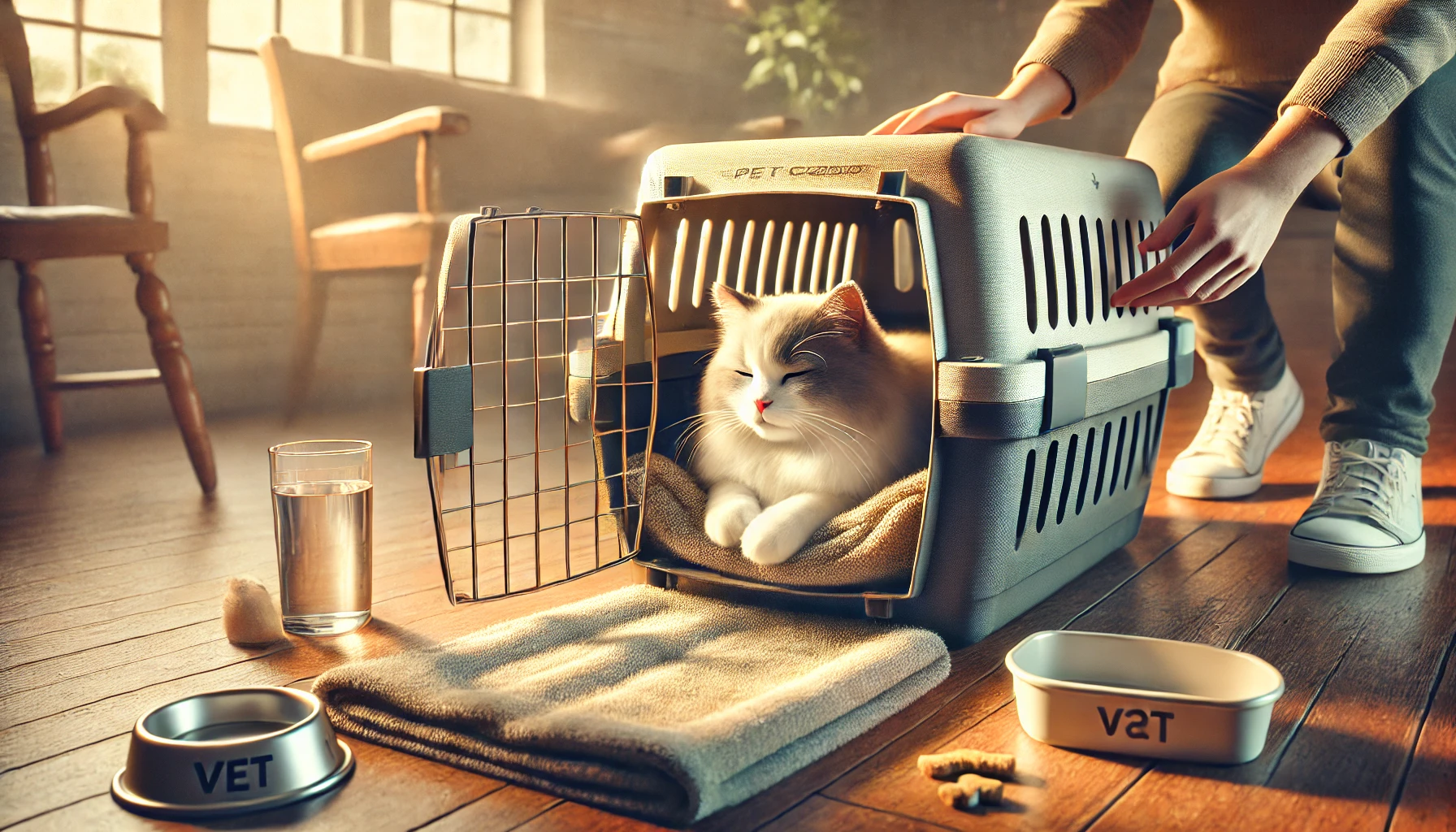
Preparing for a Visit to the Vet
To ensure your visit to the vet is as effective as possible, consider the following:
- Bring a vomit sample: If possible, bring a sample of your cat’s vomit to show the vet, as it may provide clues to the cause.
- List symptoms: Prepare a list of symptoms you’ve observed, including the frequency of vomiting and appearance of the vomit.
- Provide background information: Share any recent changes in diet, medications, or potential environmental exposures.
Knowing when to seek veterinary help can make a big difference in managing your cat’s health.
Persistent or severe vomiting is often best evaluated by a professional, ensuring your cat receives the appropriate care.
Seek veterinary help if vomiting is severe, frequent, or accompanied by concerning symptoms such as lethargy, blood in vomit, or labored breathing.
Keeping a record of symptoms can aid the veterinarian’s diagnosis.
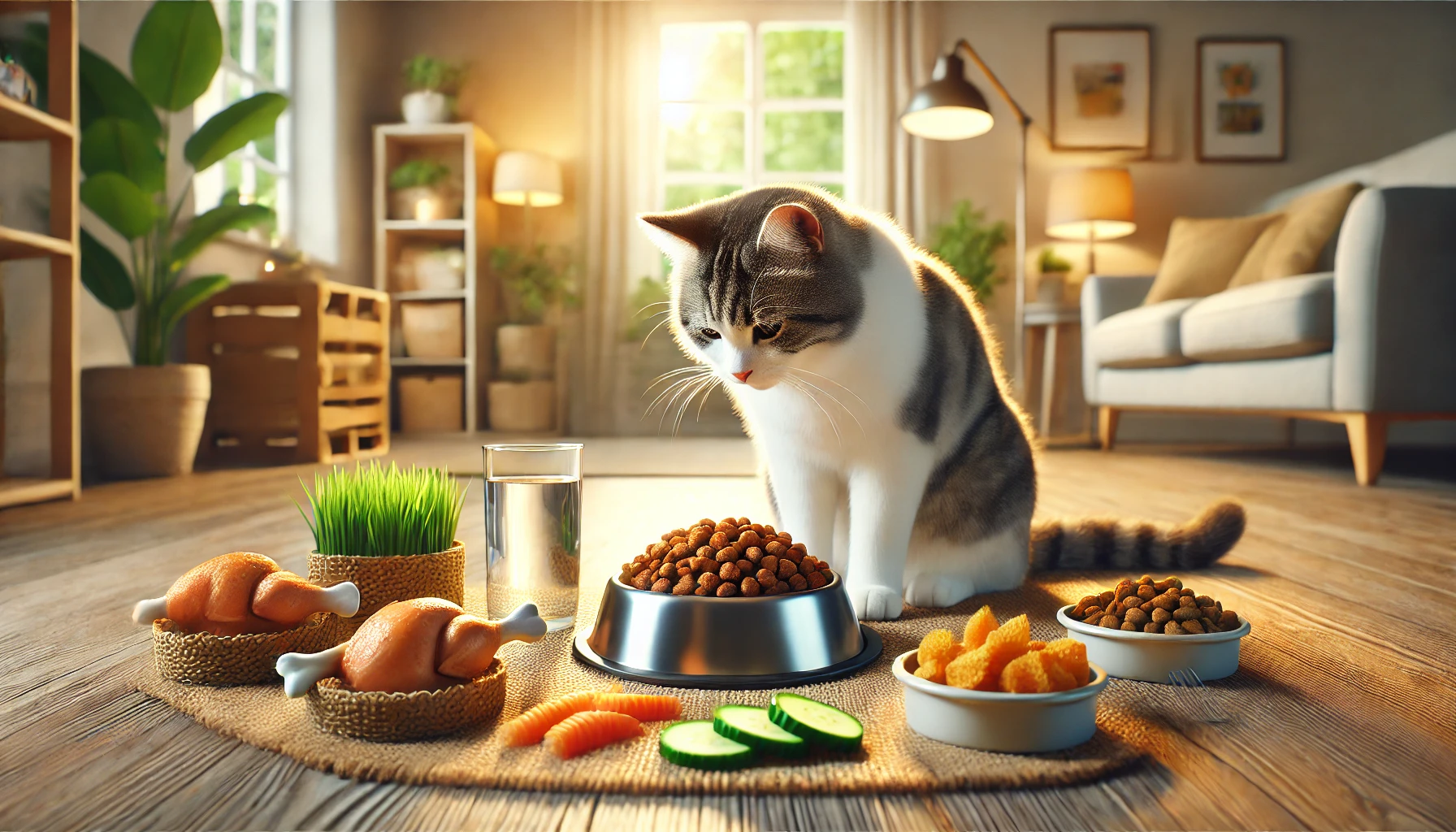
Prevention to Reduce Vomiting in Cats
Preventing vomiting in cats can be achieved through dietary adjustments, regular health checkups, and attention to environmental factors.
Being proactive can help reduce the likelihood of digestive issues in your pet and support their overall health.
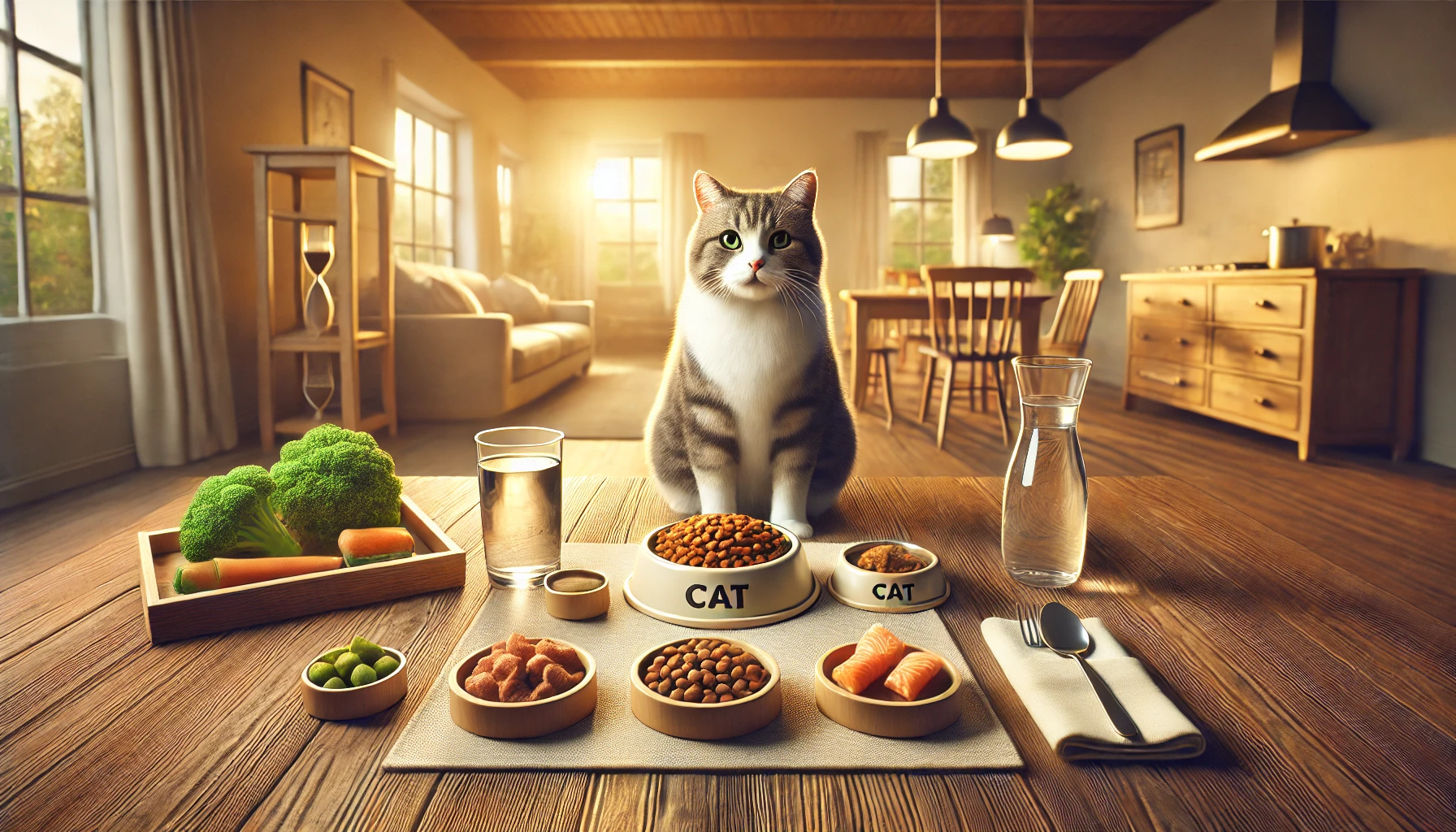
Designing a Diet Plan to Keep Your Cat Vomit-Free
One of the best ways to prevent vomiting in cats is to provide a healthy and balanced diet.
Here are a few strategies for promoting good digestion:
- Feed premium food: Choose food that meets all of your cat’s nutritional needs and is free from common allergens. High-quality food is less likely to upset a cat’s stomach.
- Apply slow-feeding techniques: Cats that eat too quickly are more prone to vomiting. Try slow feeders or divide their meals into smaller portions throughout the day.
- Use hairball-reducing formulas as needed: Hairball control formulas can help reduce the amount of ingested hair, which is a common cause of vomiting due to self-grooming.
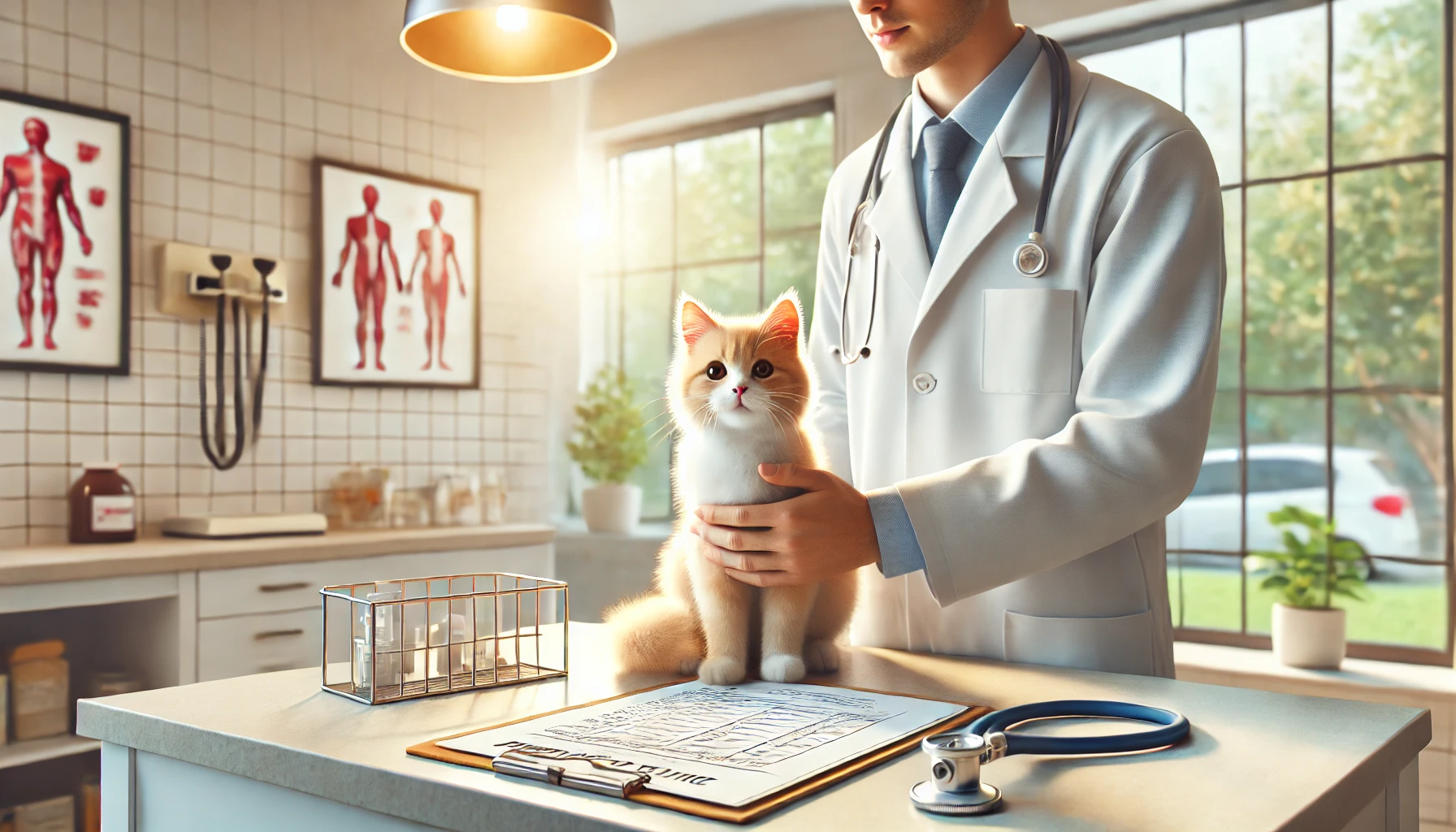
Routine Veterinary Care
Regular veterinary care is essential for maintaining your cat’s health and catching potential problems early:
- Annual wellness exams: Routine checkups can detect kidney or liver issues before they become severe.
- Preventative vaccinations and parasite control: Keeping your cat up-to-date on vaccinations and regular parasite prevention can help prevent infections that could lead to vomiting.
- Dental care: Good dental hygiene supports overall health. Poor dental health can lead to gastrointestinal problems, making regular dental checkups important.

Behavior Modification and Stress Management in Cats
Chronic stress and anxiety can contribute to health issues, including vomiting in cats.
Reducing environmental stressors can help:
- Provide a stable environment: Try to minimize changes in your cat’s surroundings, as cats are sensitive to disruptions.
- Create a calm space: Ensure your cat has access to a quiet area where they can retreat if they feel anxious.
- Engage in regular play: Playtime helps relieve stress and keeps your cat physically and mentally stimulated.
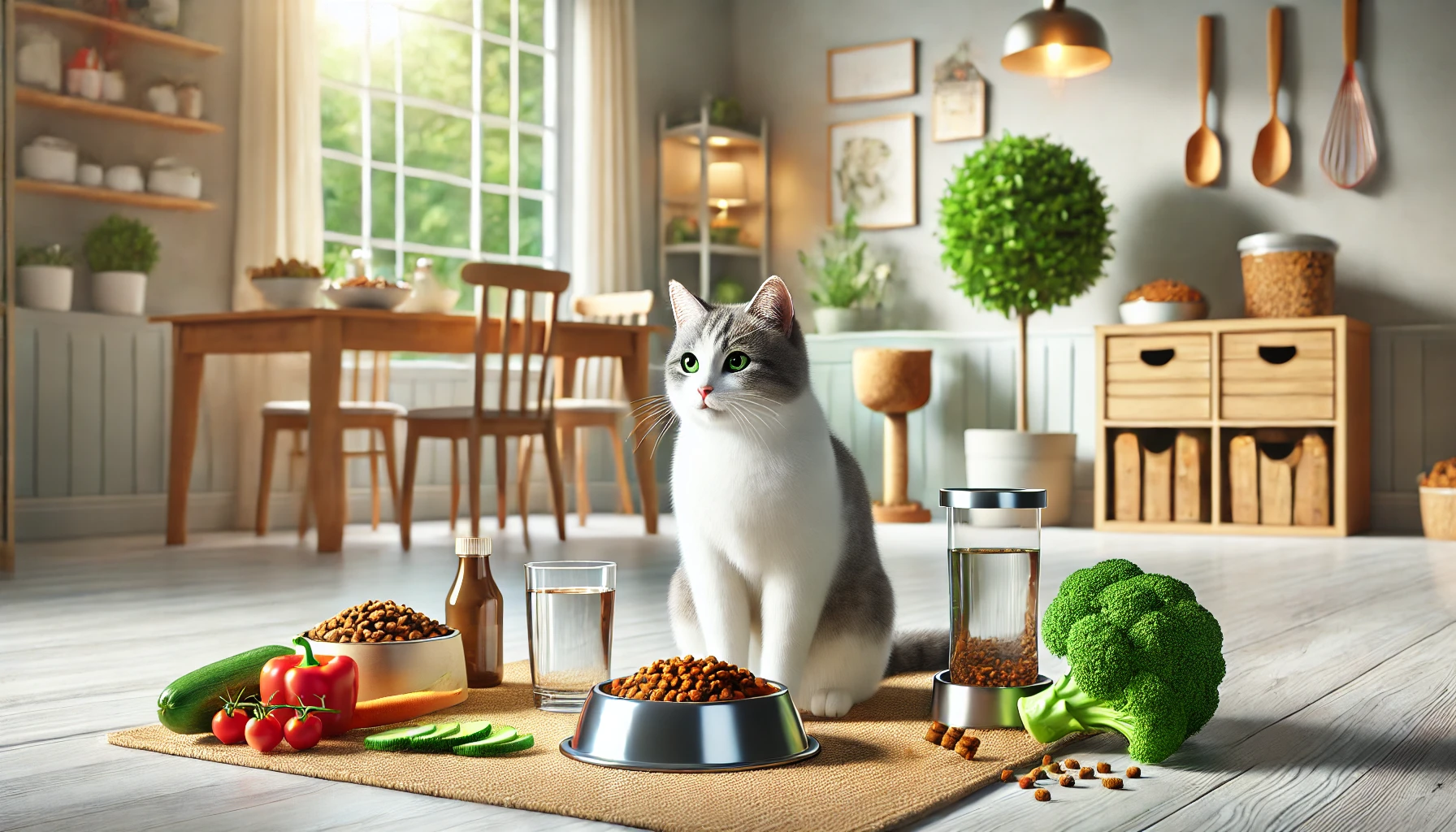
Safe Feeding for Cats
Feeding practices play an essential role in preventing vomiting and promoting good digestion:
- Avoid table scraps: Human foods can irritate your cat’s stomach. Stick to cat-specific foods designed for their dietary needs.
- Provide fresh water daily: Hydration supports digestion and overall health, especially if vomiting is related to dehydration.
- Monitor food portions: Overfeeding can lead to digestive issues. Ensure portion sizes are appropriate for your cat’s age, size, and activity level.
By following these preventive measures, you can help reduce your cat’s tendency to vomit and support their long-term health.
Regular attention to diet, routine veterinary care, and a stress-free environment are key to keeping your feline friend healthy and happy.
Prevent vomiting with a balanced diet, regular veterinary checkups, and a stress-free environment. Slow-feeding techniques and hairball control diets can also help.
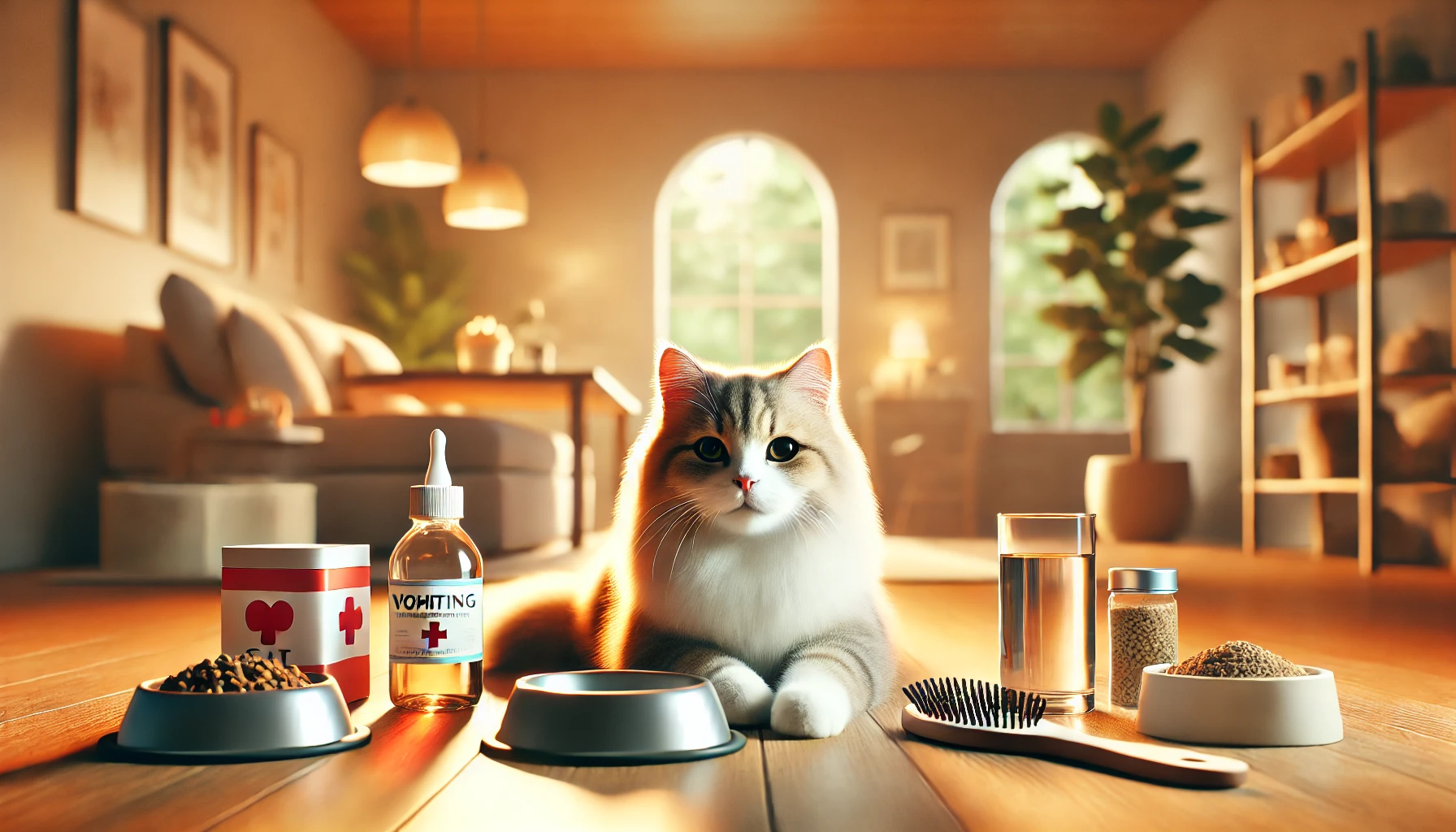
Overview: Understanding and Treating Cat Vomiting
Vomiting in cats can be an issue faced by any pet owner.
However, understanding the causes, recognizing serious symptoms, and knowing how to prevent it can make a significant difference in your cat’s well-being.
Dietary adjustments, stress reduction, and routine veterinary care are essential for managing vomiting episodes in cats.
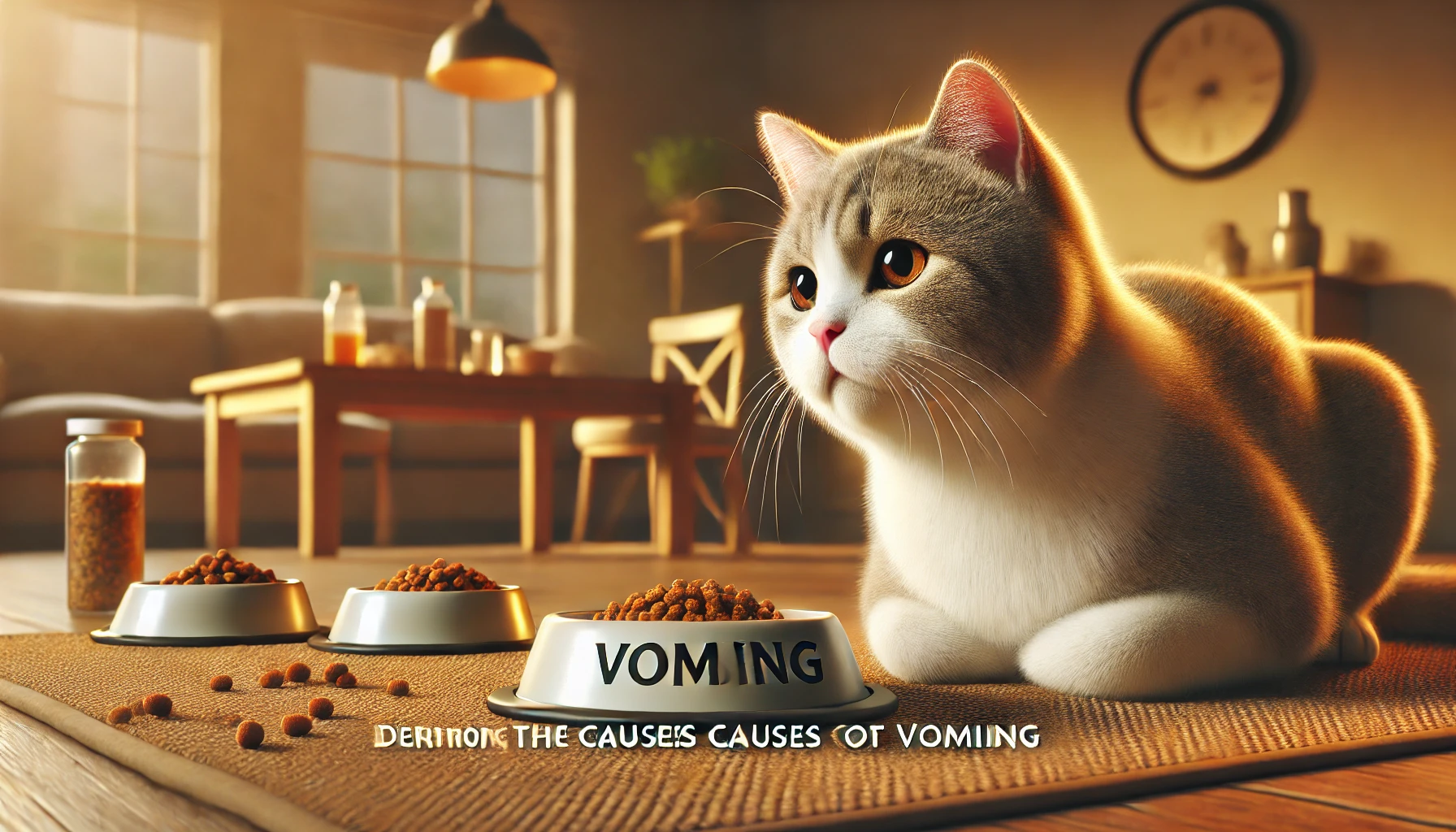
Determining Causes of Cat Vomiting
Cats may vomit for various reasons, from minor issues like eating too quickly or hairballs to life-threatening conditions.
Understanding these causes is crucial, as it helps you determine whether your cat’s vomiting is normal or requires medical attention.
With this knowledge, you can make informed decisions about your cat’s care.
Serious medical conditions that can lead to vomiting in cats include gastrointestinal disorders, kidney and liver problems, infections, and food allergies.
Symptoms such as blood in the vomit, labored breathing, or persistent vomiting should prompt immediate veterinary care.
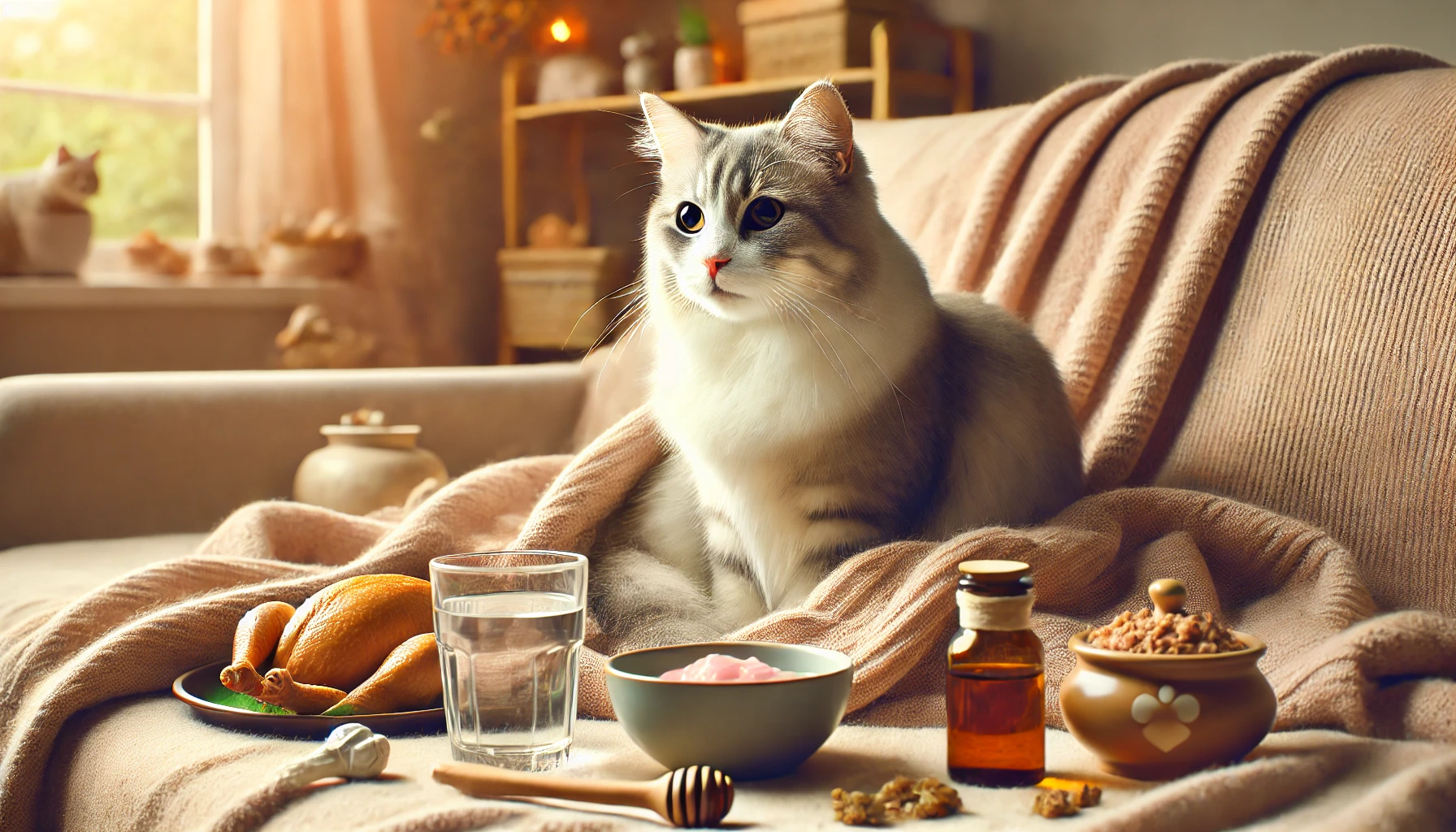
Home Remedies and Immediate Actions That Work
If your cat experiences occasional or mild vomiting, there are several home remedies you can try:
- Switch your cat to a new food gradually to avoid food-induced vomiting, opting for high-quality, hypoallergenic food if needed.
- Keep your cat hydrated by providing fresh water and, if recommended by your veterinarian, unflavored electrolyte solutions.
- To manage hairball-related vomiting, groom your cat regularly, consider a hairball-reducing diet, or use over-the-counter hairball remedies.
- If necessary, withhold food temporarily to allow your cat’s digestive system to rest, then reintroduce a bland diet gradually.
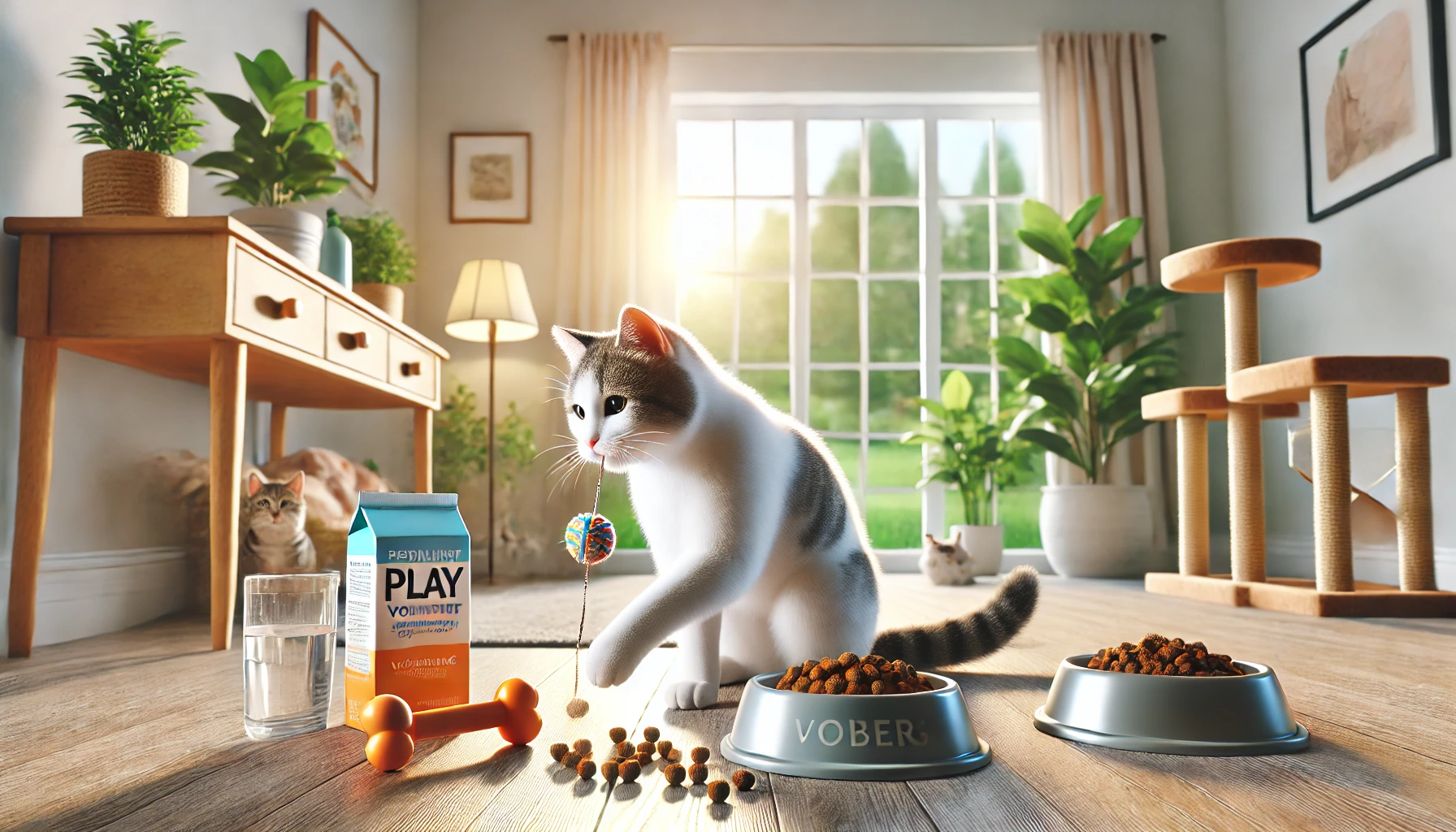
Preventive Measures to Lessen Future Vomiting
Adopting preventive strategies can help reduce the likelihood of future vomiting episodes:
- Create a well-balanced feeding plan, use slow-feeding techniques, and consider hairball-reducing formulas as needed.
- Schedule routine veterinary care, including wellness exams, vaccinations, parasite prevention, and dental checkups, to catch potential health issues early.
- Reduce stress by providing a stable environment, a quiet space for relaxation, and regular playtime to support your cat’s mental and physical health.
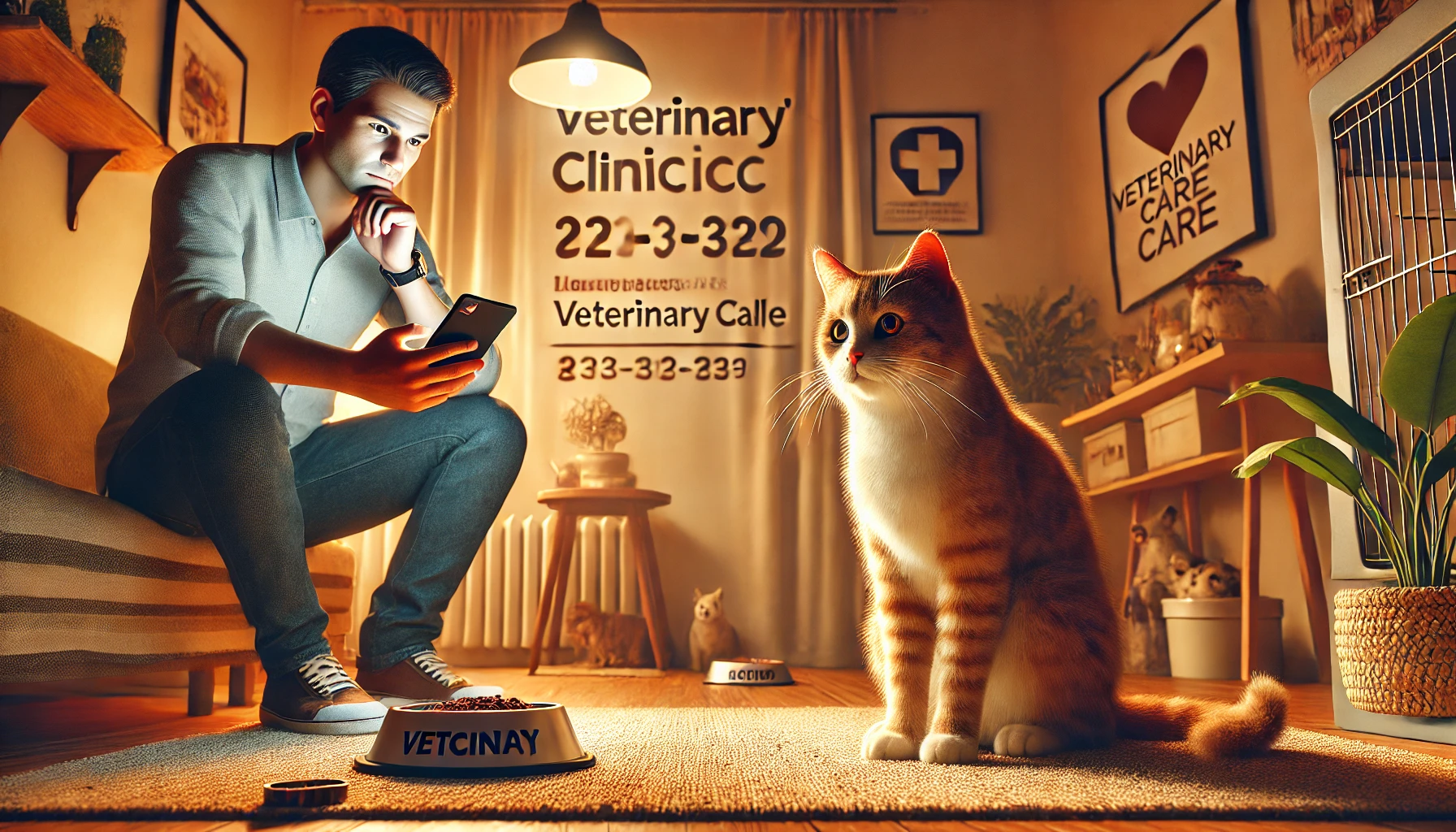
Knowing When to Take Your Cat to a Veterinarian
Veterinary intervention may be necessary if vomiting is persistent or severe.
Track the frequency and symptoms of vomiting and consider diagnostic tests to identify the cause.
Keeping a log of vomiting incidents, noting behavioral changes, and consulting with your veterinarian at the right time will ensure your cat receives the best possible care.
In summary, managing vomiting in cats involves a balanced approach that includes monitoring health, adjusting diet, scheduling regular vet visits, and maintaining a stress-free environment.
By implementing preventive measures and acting promptly when symptoms are concerning, you can support your cat’s health and minimize recurrent vomiting episodes.
Managing cat vomiting involves dietary adjustments, monitoring health, and providing routine veterinary care. Recognizing serious symptoms and acting promptly ensures your cat’s well-being.
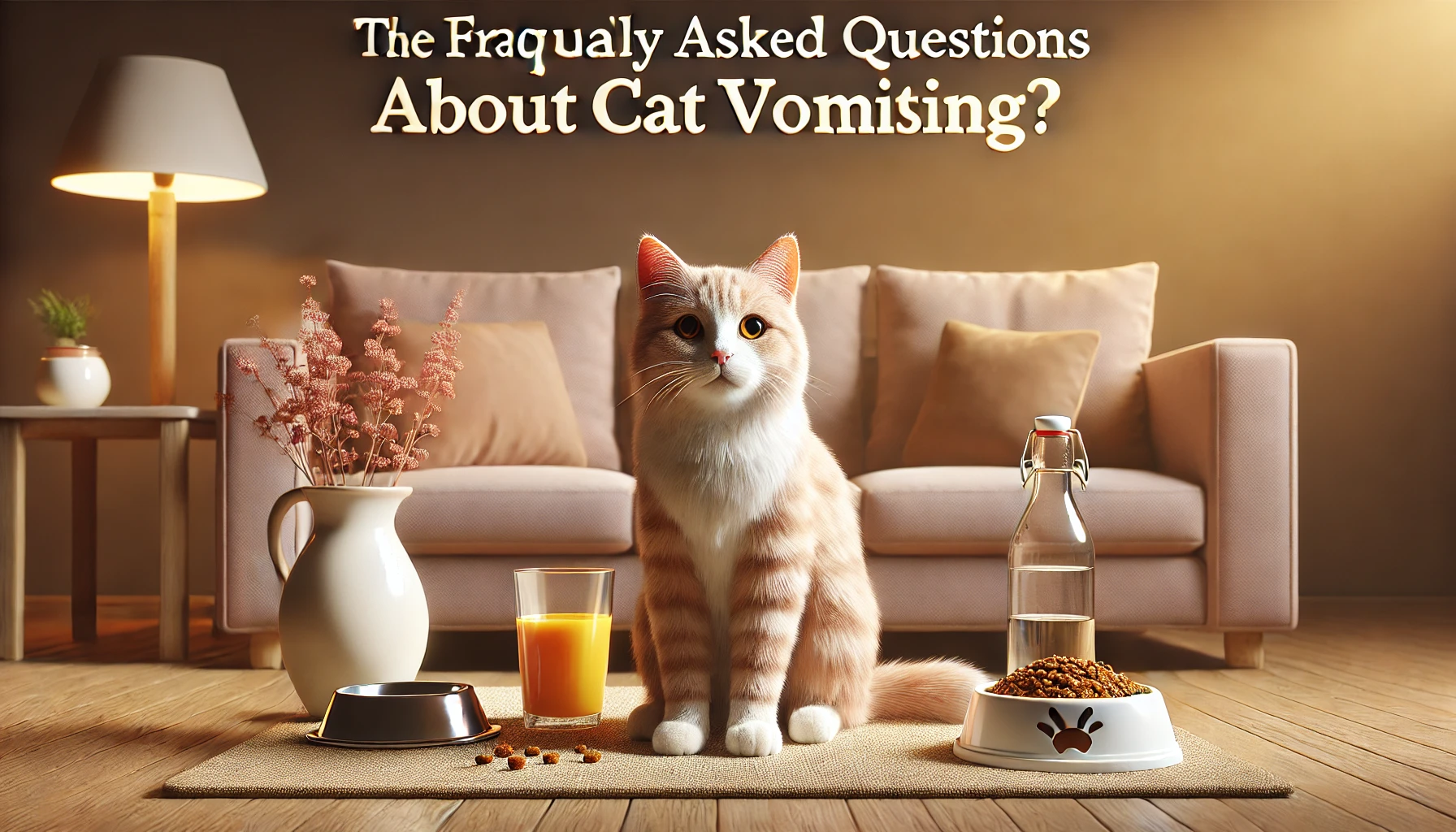
Cat Vomiting: Frequently Asked Questions
This section provides answers to common questions regarding vomiting in cats, its causes, and how to prevent or reduce it.
Being familiar with these answers can help you take effective steps to ensure that your cat does not experience frequent vomiting.
Why does my cat vomit after eating?
Your cat may vomit immediately after eating because they eat too quickly, which can irritate their stomach.
Slow-feeding bowls or offering smaller, more frequent meals may help reduce vomiting after meals.
How can I tell if vomiting is serious?
Vomiting is serious if it’s frequent, contains blood, or is accompanied by other symptoms like lethargy, loss of appetite, or breathing difficulties.
If you notice these signs, consult your veterinarian promptly.
Can hairballs cause frequent vomiting?
Yes, hairballs can lead to frequent vomiting, especially in long-haired cats.
Regular grooming, hairball-specific diets, and remedies designed to manage hairballs can help reduce vomiting caused by hairballs.
What home remedies help with cat vomiting?
For occasional vomiting, gradually transition your cat to new food, keep them hydrated, manage hairballs, and consider a brief fasting period before reintroducing bland food.
Persistent vomiting should be evaluated by a veterinarian.
When should I take my cat to the vet for vomiting?
If your cat’s vomiting persists for more than a day, is frequent, or is accompanied by other warning signs, visit the vet.
Tracking vomiting frequency and appearance can help your vet diagnose the cause.
Can food allergies cause cats to vomit?
Yes, food allergies or intolerances can cause vomiting.
Your veterinarian may suggest hypoallergenic food or an elimination diet to identify allergens and minimize symptoms.
What types of food prevent vomiting in cats?
High-quality, hypoallergenic, or hairball-control foods can help reduce vomiting.
Choose foods that meet nutritional needs without common allergens, and consult your vet for the best options.
How do I prevent vomiting related to stress?
To reduce stress-related vomiting, maintain a stable environment, provide a quiet retreat, and engage in interactive play to keep your cat calm and stimulated.
Is it safe to withhold food when my cat vomits?
Withholding food briefly can be safe for adult cats, allowing their stomachs time to settle.
Provide fresh water, and consult your vet before reintroducing a bland diet if vomiting continues.



